






MBIS MSBIS GCHS VJK-MYST HEIR TO THE THRONE
JH FDC CGCA CGCU TKN BN-V
Owners;TheGrantFamily,Robert,SherylandMeredith
Breeders/Co-Owners;YvonneHassler-DeterdingandSusanStutz
Breeder/Handler/Co-Owner;ValerieNunes-Atkinson

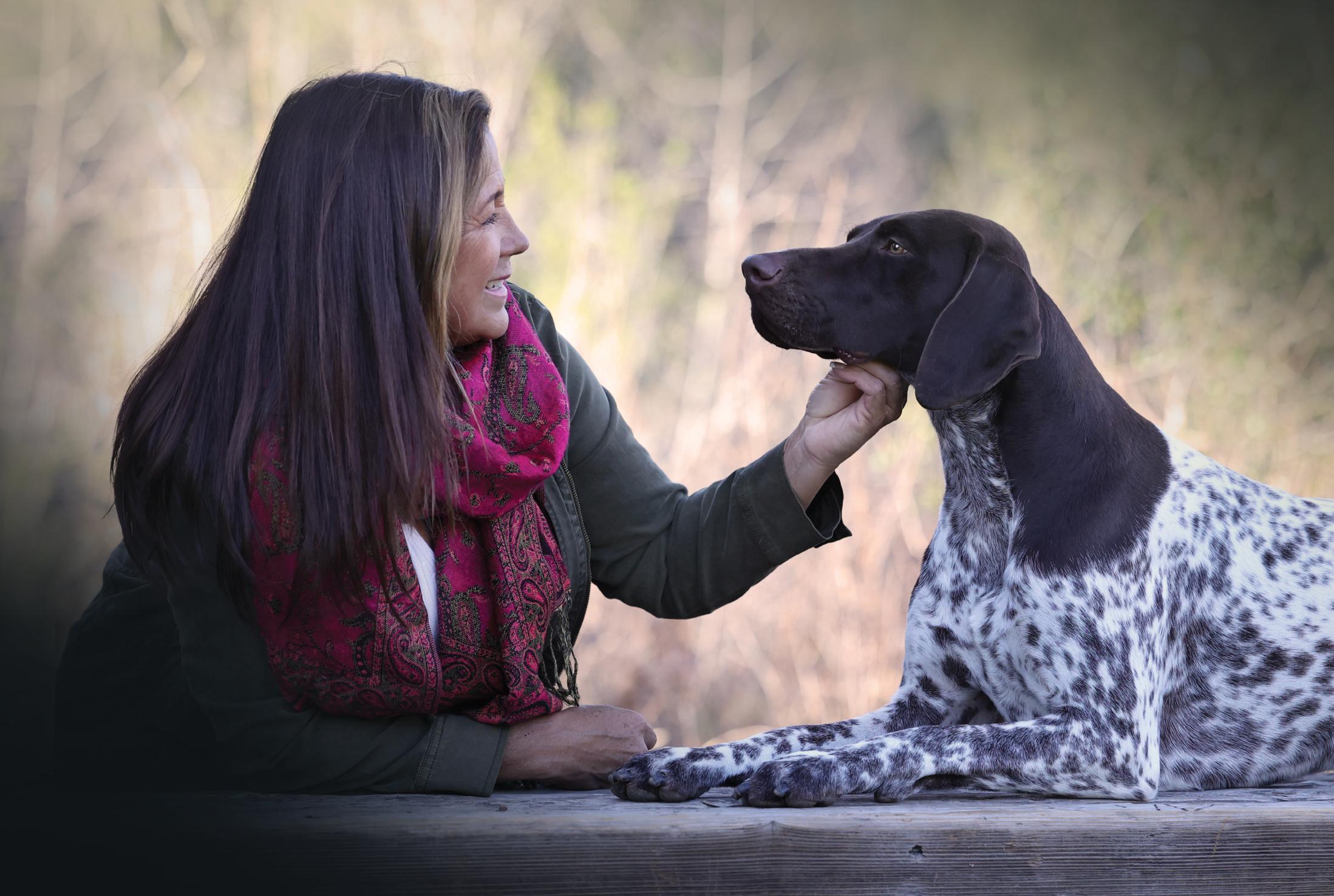
AssistedBy;AntonioVidmar
Katie Gochev DESIGN
1GSP No.
aTop SPORTING DOG
 S.L. Stutz
S.L. Stutz
Be fearless in the pursuit
ofwhatsetsyoursoulonfire
-Jennifer Lee






Best in Show
Dear readers,

We are thrilled to present to you our latest edition of the magazine, which is packed with exciting features and interviews with some of the most prominent figures in the dog show world. In this edition, we have a special focus on the beloved breeds of Cavaliers and English Toy Spaniels, with exclusive insights from world-famous breeders.
In addition to our breed features, we are honored to have interviews with notable figures such as Crufts Best in Show winner handler, Javier Gonzalez Mendikote, and the talented Owner Handler Remy Smith-Lewis. Their insights and experiences are sure to be inspiring to all dog lovers.

As the Westminster show approaches, we wish all the participants a safe and successful trip. For those traveling to New York, be sure to check out our Travel Tips section, where we have compiled some fantastic suggestions for making the most out of your visit.
We hope you enjoy this edition and find it both informative and entertaining. Stay safe.
JOVANA DANILOVICLEE GROGANBONNIE GUGGENHEIM CHRISTIAN RANGEL BISCREATIVE.COM MARY MARSHALL DJORDJE DANILOVIC BELTRAN ALONSO Editor in chiefColaboratorSales Department 352-362-3863 bonnie@bismagazineusa.com Marketing Director Art Department Copy Editor Social Media
WE ARE
www.BISmagazineUSA.com · info@BISmagazineUSA.com · www.BIScreative.com



MEET THE

CAROLINE BOWLES-ROBINSON BALDRAGON kennel
DOUG JOHNSON & JAIME HUBBARD CLUSSEXX kennel
JEROME ELLIOT CHERI-A’S kennel

RICHARD LEBEAU BEAUPRIX kennel



MEET THE BREED
CAVALIER KING CHARLES SPANIELS
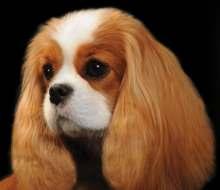
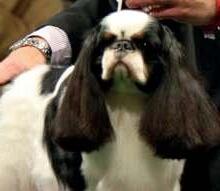
ERICA & RACHEL VENIER ORCHARD HILL kennel
KEVIN CLINE FORESTCREEK kennel
MICHELLE CHAPMAN & TANYA IRELAND ELLEMICH kennel
PAULA AYERS BROOKHAVEN kennel
BEST IN SHOW MAGAZINE 20 CONTENT 32 86 64 108 158 108 144 JAVIER GONZALEZ MENDIKOTE REMY SMITH-LEWIS CRUFTS 2023 QUEENS NOAH MILLIAM ENGLISH TOY SPANIEL
INTERVIEW WITH HANDLER FROM THE OH LEASH RINGSIDE CLICK TRAVEL TIPS INTERVIEW WITH JUNIOR HANDLER
BREED
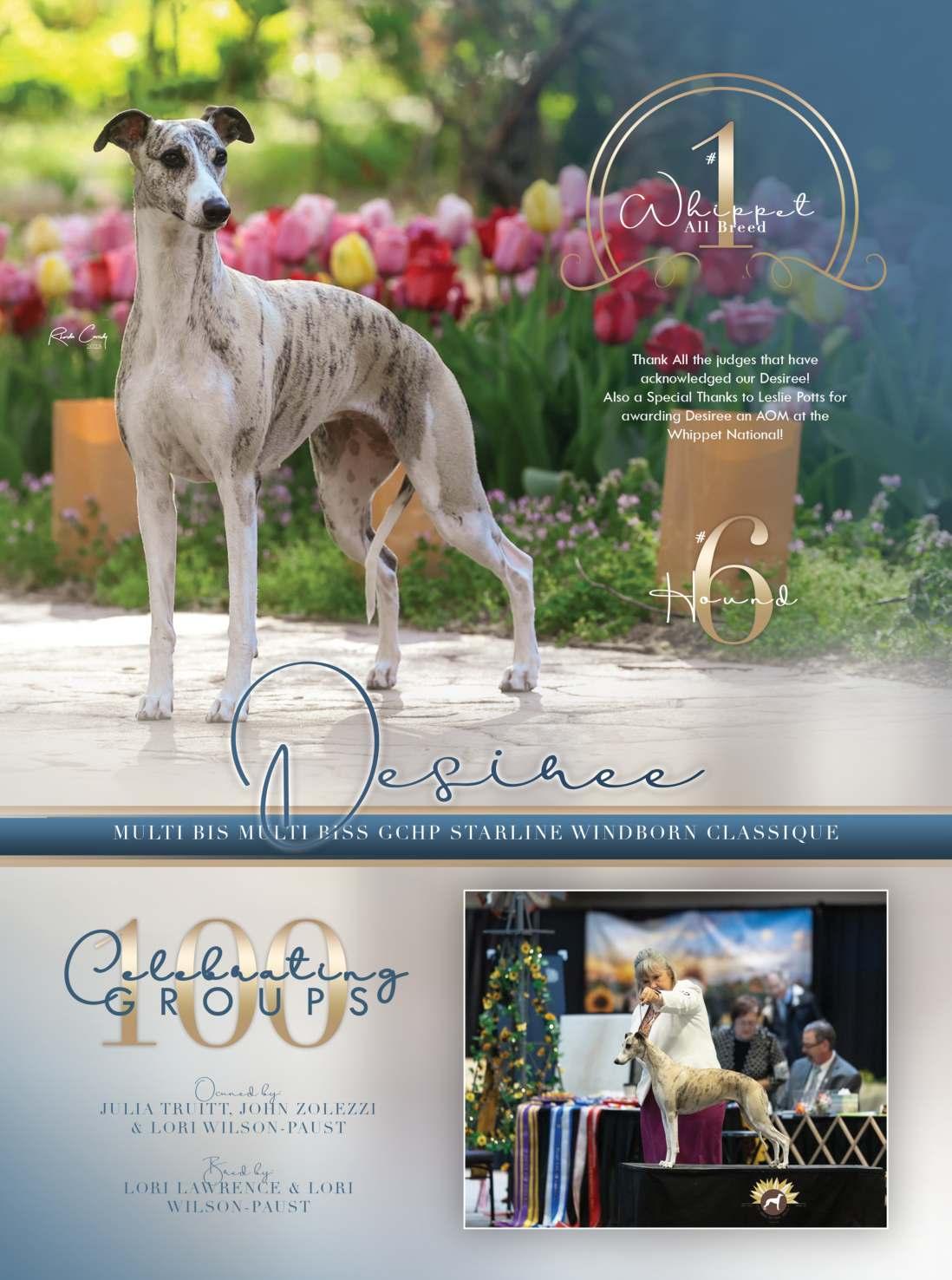














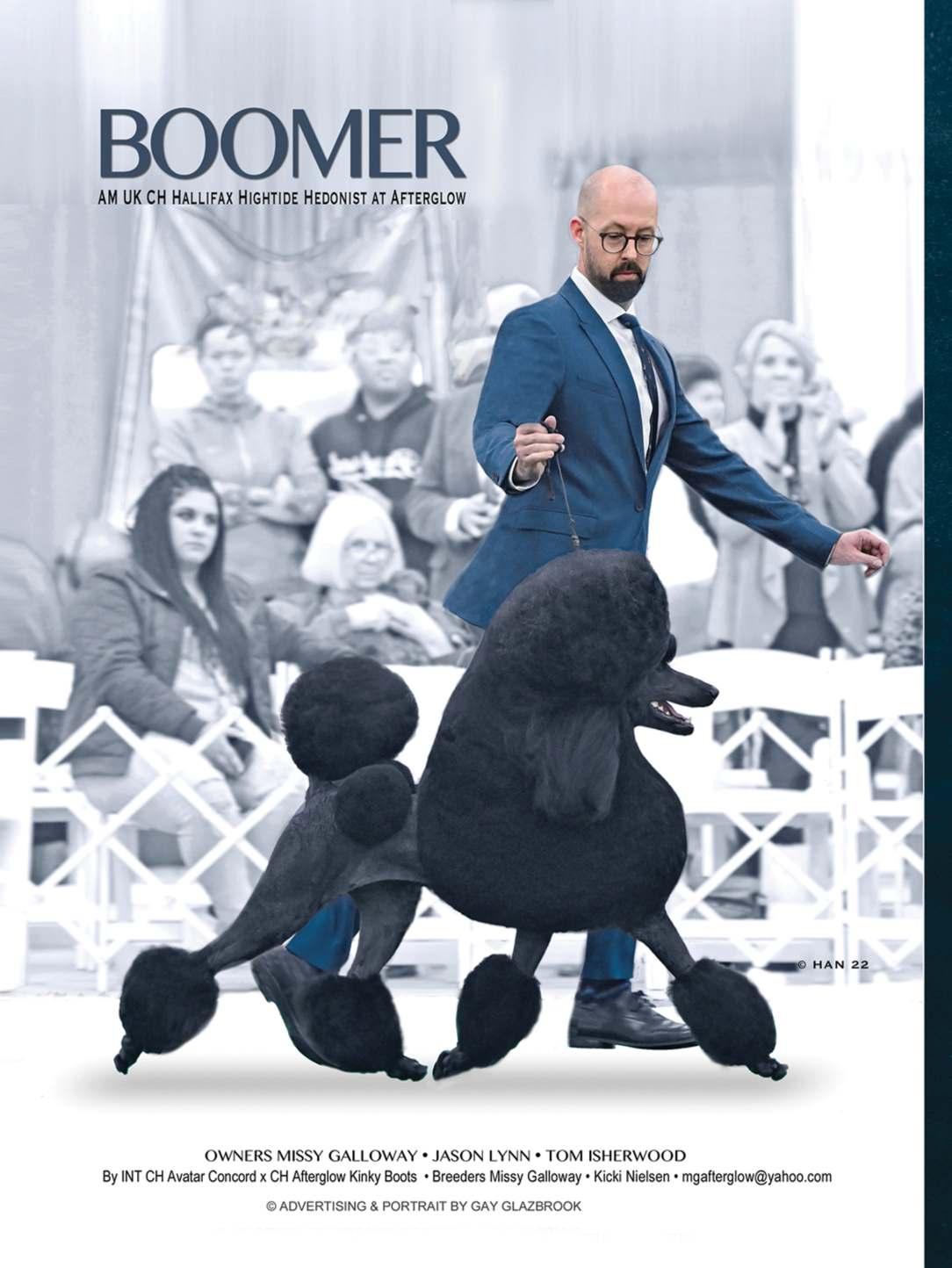

JAVIER González Mendikote

Dear Javier, thank you for taking the time to do an interview with us. Even though you are very young, you are already one of the most famous and successful handlers. Please tell us for the beginning, how did you get involved with dogs? What was your first breed?
My parents were not dog lovers, but my uncle is a well-known breeder and exhibitor of German Shepherds, and it was him who supported and encouraged my interest in dogs. As a young boy, I used to go every single day to his kennels to help him with cleaning and to play with his dogs, and it was actually him who bought me my first dog, a black English Cocker Spaniel named ‘Roman de Galican’ aka Loti. It was not easy to persuade my mother to let me have my own dog at home, but after days and days of begging and fighting, she gave her conditions and Loti came home.
My uncle taught me all the basics about dogs. We spent hours and hours looking at photos of famous dogs, and he explained to me everything about structure, such as the importance of the upper arm, croup, angulations, and everything else. At the end of each conversation, he would always point out that the structure of the dog and all his virtues and faults can be best seen when watching the dog move. He had an obsession with shoulders of the dogs, and certainly, I got that from him. I think that the position of the shoulders gives all the elegance and makes the general picture of the dog. I am really obsessed with it, and as soon as I go to look at one dog or a puppy, it is the first thing I look at!
PROFESSIONAL HANDLER

Till today, you have won numerous Best in Show wins. What about your first Best in Show, and how did you feel winning your first BIS?
I remember winning my first BIS very vividly. I showed an American Cocker owned by my uncle named ‘Carfi Titiritero’ aka Lord. It was in Ammurio show in Spain in 2002, and the BIS judge was Mr. Joao Filipe Serradas Vieira Lisboa from Portugal. At that time, I was going to many shows with my friend Igartxune, who was actually the first “doggy” person I became friends with. I remember the dog having a very difficult coat, which was almost impossible to make straight, and we spent all morning ironing him. He was a dog with a lot of charisma, always happy and wagging his tail. I was so happy and proud to win that BIS, but then when I came home and saw the photos, I was so ashamed of how the grooming looked that I immediately started looking at how I could improve it for the next show.
The topic on fire nowadays all over the world is certainly your win at Crufts with the beautiful Orca - Lagotto Romagnolo. Do you consider this as the biggest win in your career so far? Please tell us something about it.
Handling Orca to BIS at Crufts was really a dream come true, and it is something I really could not have imagined would happen to me at this point in my handling career. She came to us as a puppy and was something special from the beginning. She had a fantastic albeit brief show career in Europe before traveling to the USA where she and Phil Booth made history together for the breed. The fact that she was able to return to us to finish her show career was like things coming full circle. It has been incredible to receive messages and support from so many people around the world who watched and cheered for her and me and for all of us on her “team,” which extends around the world really. Even my mum and dad were excited and watched the show on YouTube. There is something magical about the effect that Crufts has on all of us in the dog world, from Europe and beyond.
Please mention some other successes you had that you will treasure forever.
It is very difficult to choose, as there are many reasons why some wins are memorable, but I will focus on our biggest shows in Europe. I would say that winning BEST IN SHOW with the Lhasa Zentarr Morgan at the European show in Bucharest under Mr. Petru Muntean was my first really important win. On the same show, we won two more groups - with Roma the Wire Dachs and Vigo the Kerry. After that, I won two groups at the World Dog Show in Helsinki, with the young Wire Dachs “Dolce Fontana di Trevi” and the Maltese

BEST IN SHOW MAGAZINE 40
PROFESSIONAL HANDLER · JAVIER GONZÁLEZ MENDIKOTE
“Cinecitta Sacha Baron Colen,” who went on to win Reserve BEST IN SHOW under Hans Lehtinen. With the Maltese “CH Cinecitta Ian Somerhalder,” we won the Eukanuba World Challenge. The Lhasa Apso CH Shut Up N Kiss Me dell Alberico was RBIS at the WDS. I also won 2 groups at WDS in Milan with the Standard Wire Dachs “CH Piumeta del mio capelo” and the Parti Cocker “CH Afterglow Dragon Quest.”

Since I’ve known you, which has been more than 10 years now, you’ve always had great assistants at shows and in your home. How important are they to you, and what qualities do you appreciate about their relationship with dogs?
While living in Spain, I never used to have assistants, but I would travel with close friends and associates, and it would be like a teamwork. I was lucky enough to spend my show weekends with Mireia Cabre, Felix Duque, and Philippe Gallardo. I learned so much from them at a young age, but after moving to Croatia to work with Ante Lucin, we realized that with so many dogs and so much traveling, it was necessary to have good help. Ideally, we have two assistants at all times so that one can join us for the shows, and another can stay at home. Having good assistants is crucial in our job. I spend almost all day grooming and training the dogs, which means I need someone who will help manage the other aspects of care, keeping the dogs clean and happy and running the kennel. I am really demanding, and I always want to know everything that is happening at home. A good assistant can only be a person who has the passion and love for dogs and, at the same time, the strong will to learn. I always try to teachthatlonghoursofbathing,cleaning,andtraining are just the start. Unfortunately, many people think
that taking a piece of food to your dog and dressing well is all it takes to win. Still, with everything else, to have the dog shine in the ring, he must be happy. Good assistants help give the show dog a good life and love, which makes him shine – that is the key to success.
You are very well-known as a handler specialized in long-coated breeds. How did you find it attractive to work with long-coated dogs?
To be completely sincere with you, I must say that in the beginning, I hated long-coated breeds. When my Aunt got tired of having so many German Shepherds at home, she decided my Uncle should make one more prefix in addition to his already famous Itxasondo,
BEST IN SHOW MAGAZINE 41 PROFESSIONAL HANDLER · JAVIER GONZÁLEZ MENDIKOTE
PROFESSIONAL HANDLER · JAVIER GONZÁLEZ MENDIKOTE
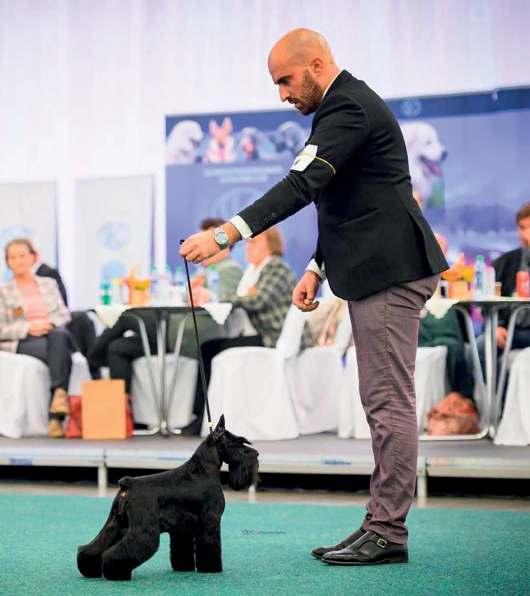
everything I do, I guess I learned quite fast and hard work and good cosmetics resulted very soon with our first Shih Tzu champions, then group winners with BIS placements. When Jovana asked me to do this interview, I looked for some old photos and realized that my dogs years ago looked different than they look today, but today my dogs look much better. It would be a shame if it were the opposite. I always say that hard work always pays back.
Working as a handler demands a lot of traveling. What is your favorite country you have traveled to?
I love to go to Italy. My first and the most important clients live there, and I always enjoy my time there. I love their food, architecture, and language. It is not exotic, but it is very charming and special. Still, if I would need to pick just one city, I would vote for Budapest, which is really magical, especially during the night.
which he still uses only for the German Shepherds, and start to breed some smaller breeds too. That was the start of the “Kirikino” kennel, which became well known for American Cockers and Shih Tzus. This is why almost no one in Spain calls me by my real name but by my nickname Kiri. I remember always trying new cosmetics, hoping there was a special formula, a kind of special shampoo or conditioner which would make the dogs have a fantastic coat without working too much! How wrong I was! I remember on one of my first shows, I heard breeders talking about having the coat treated in oil, so on Monday after a long day in school, I came home, bathed the dogs, and put olive oil on their coat. It was summer and after a few days, they were full of allergies and tangles! So I learned my lesson! Anyway, as I always wanted to be the best in
Do you have favorite show?
Yes. I must say that my favorite show for sure is Estoril in Portugal. We are always well treated on the shows in Portugal but there is something so special about Estoril. It is organized on the gorgeous show ground in front of the casino, during the summer, near to the beach. Everything looks so nice. The food is fantastic and we enjoy the famous caipirinas. Since I moved to Croatia it is also a perfect chance for me every year to meet on one place all my dear friends from Spain and Portugal. Also it proved to be my lucky show as among all the great results achieved there, two times I did a triple there with my dogs – meaning winning three BIS out of three in the same weekend! I did it with Morgan the Lhasa and Sacha the Maltese!
BEST IN SHOW MAGAZINE 42
What part of your job do you like the least in this business?
This is certainly an easy question for me to answer. I cannot decide if I hate packing or unpacking more. After all the work has been done in the kennel, it is horrible to pack the car, but even worse is coming home tired after a long weekend and having to unpack it all. Also, I am not so good with making client bills and doing entries; in fact, all paperwork does not work very well with my character!
What would you do if you didn’t decide to be a handler?
After finishing my high school education, I went to the university to study to be an industrial engineer specialized in electromechanics. So, if I hadn’t fallen in love with dogs and dog shows, I would likely have finished my degree and started working in that profession.
What do you respect the most in judging skills?
I think that first of all, a good judge must have a real understanding of breed type. You can easily follow the mindset of a breed judge who consistently rewards the same type through the classes. Of course, structure and movement are so important, but I believe that the best judges start with type and then find the best structure. I also feel that they need to have respect for the exhibitors as well as the dogs. It takes a lot of effort to bring dogs into the ring, and it is always nice to feel that it is treated with respect and a bit of appreciation.
Which dog was your favourite dog that you ever handled, and was this dog also your most successful one?
The Maltese CH Cinecitta Ian Somerhalder, Standard Wire Dachshund CH Magica Roma, and Lhasa Apso CH Swingtime dell’ Alberico, all hold a special place in my heart,butifIhadtochooseone,itwouldbeIan.Hewas

BEST IN SHOW MAGAZINE 43
· JAVIER GONZÁLEZ MENDIKOTE
PROFESSIONAL HANDLER
not my most successful dog, but he had a wonderful character and was a joy to work with.
Do you have any hobbies besides dogs (if you have time for hobbies)?
I used to play the Spanish guitar, but it’s been a long time since I’ve had the chance to play. I enjoy watching and following Formula 1 races, and I love spending time at the beach, especially surfing.
Please tell us the name or two if there is someone whose skills you admire when it comes to breeding, showing, grooming, or judging?

It’s difficult to mention just a few names, as there are many people whose skills I truly admire. However, I have been very fortunate to work with breeders like Franco & Stefano, Annaluce, Silvia, Luisa, and Mieke, who do their job with passion and knowledge. I’ve learned a lot from them and appreciate their success.
I also miss my talks with Carlos Renau about dogs, and I will always remember what he told me while we were watching a Best in Show at Spain’s Obligatory Point show, “A lot of dogs can put on a show and move amazingly in the end of the leash, but that means nothing if the dog does not have TYPE.”


How would you describe a professional handler? What are the most important skills for a handler?
I think a handler is a person who knows how to understand dogs, their virtues, and faults, and who knows how to emphasize or hide them. Good handlers should be just the end of the lead, not the star, but an almost invisible guide who makes the dog the star attraction. Being professional means bringing always and exclusively top-quality dogs in the best condition. Nothing less than the best should be acceptable. And, of course, always putting the care and welfare of the dogs as the top priority.
BEST IN SHOW MAGAZINE 44
PROFESSIONAL HANDLER · JAVIER GONZÁLEZ MENDIKOTE

If you could, what would you change in the dog world?
I think we need to come back to the basics when looking at dogs, remembering more about the type and function of each breed. Today, more and more breeds are moved and presented the same way. My profession has some responsibility in this as there is a sense that “more” and “faster” are always better, and it is often the case when judges are not secure in their decisions. We need to remember the special characteristics of each breed and work to preserve them as breeders and exhibitors and as judges. And, to retain those traits in our handling and presentation.
During your career till now, you made wonderful results with several different Lhasas including Ch. Striptease Dell’Alberico, Ch. Zentarr Morgan & Ch. Swingtime Dell’Alberico. Tell us, please, what is the most attractive thing in this breed for you?
Lhasas are certainly my favorite breed. They are so special that once you meet them and fall in love with them, you will never be without at least one at home. They have an incredible temperament; so intelligent and stubborn at the same time but never too demanding in character. Their silhouette is so beautiful, and it is just everything my eye would like to see in a dog. They always have only “one” owner, and they are ready to do everything for him. It is their special eyes that made me fall in love with them, and after Najua (Swingtime) finished her show career, I kept her as my pet, and later on, we kept Striptease in retirement. Today, it is Elton, the famous Australian import from the Amesen kennel, along with Erica (herself a Crufts BOB winner) who are living as house pets in their later years.
8 years ago, when I was talking to you about what you would like to do in the future regarding dogs, you said you would like to breed Lhasas. I know that recently, you became a co-owner of the DelAlberico kennel together with Stefano Paolantoni. How long have you been involved in the Del Alberico kennel, and how do you see the future of the breed?
I have been showing Stefano’s dogs for over 15 years, and I could not have asked for a better mentor for the breed. He has founded and continued a family of dogs that have been influential in Europe and all around the world. Most recently, it was homebred
“Eric” who not only was a BIS and National Specialty winner in the USA but has also left behind top-winning kids. Working with Stefano to carry on the breeding program is something that excites me.

BEST IN SHOW MAGAZINE 46 THE PEKIGNESE · HISTORY IN ENGLAND
PROFESSIONAL HANDLER · JAVIER GONZÁLEZ MENDIKOTE

PROFESSIONAL HANDLER · JAVIER GONZÁLEZ MENDIKOTE
In general, I think that Lhasas continue to need close attention to fronts and bites. There are many dogs that make a beautiful picture standing, but move without reach and drive due to a lack of balance. Striving to improve these areas while preserving type and temperament is the goal I have going forward.
You have visited and shown at the greatest shows in the world. How would you describe the following shows in your own words: Crufts, Westminster, Orlando?
They are all quite different in style, but each is unique and has its great points. Crufts is unquestionably the biggest show in the dog world, in the mother country of dog showing. The breed entries are huge, and there is so much to see.

Westminster is glamorous and exciting, maybe in part because of NYC. There, you can see the best handlers in the world competing, and the level of quality is so high. I must say that I always loved the groups at MSG.
The Orlando shows offer a lot of competition, a very well-organized and spacious venue, and a week of show events that brings together many international entries.
What main differences do you see between dog sport in Europe and the USA?
There are a lot of differences in the show scene. Firstly, the organization in America is much more professional and planned out, which must make the work of handlers and exhibitors easier. There is a tradition of professional handling, and I think that Europe would benefit from an organization for handlers such as the CPHA to distinguish those who are serious about the job of handling.
The situation regarding grooming varies across Europe; in some places, it is forbidden to use grooming products and driers and even a table arm in some places. This trend is fueled by a rising AR presence across all of Europe.
In Europe, we have some super quality dogs and wonderful breeders, but in the US, it is all more professional, and I can’t help but admire that. However, I appreciate that in Europe, we probably see more owners and breeders competing at the top level without advertising or big budgets, and I would hate to lose this aspect.
BEST IN SHOW MAGAZINE 48
Have you ever given a thought of moving to the USA?
I have often thought about it, but in reality, I think that going to shows five days a week would be much different from the way of life I have become used to in Europe.
Is there any breed you didn’t have a chance to show yet, but you would like to give to?
I think showing a Poodle would be an exciting challenge, maybe one day.

Do you consider being a judge in the future?
More and more, I think that I could enjoy judging. I do love judging juniors, but I think someday it would be nice to find another way to use the years I have spent in the dog world. I have been deeply involved in several breeds, and I think it could be enjoyable to study and learn more in the pursuit of judging.
How do you see the future of the sport?
Unfortunately, I am not so optimistic, mostly because I think that society is drifting more and more toward anti-pet and breeding legislation that will eventually make the sport as we know it difficult if not impossible to sustain. Our kennel clubs and indeed the FCI must find ways to battle the AR lobby while we can.
If you were to do this all over again, would you go for it?
Somedays I really wonder how my life might have been otherwise, but I have been really fortunate and have had amazing opportunities, friendships, and experiences because of the dog world. So the answer is 100% yes.
You are very well known for your impeccable conditioning and grooming of drop-coated breeds.
What do you think, how important is grooming when judging, how important is grooming for judges?
I love to see a dog in beautiful coat condition, and since I became involved in drop-coated breeds, it has been a learning process and a dedication to making my dogs as close to perfect as they can be. As a handler, this is literally my job, of course, making sure that the whole dog is cared for, not just the hair. I think that sometimes people forget that the coat is the “cherry on top” but not the whole cake. But to answer your question, surely a beautifully groomed coat makes a good impression on most judges, and under some of them, it may make all the difference. But grooming is only part of the whole picture.
BEST IN SHOW MAGAZINE 49
PROFESSIONAL HANDLER · JAVIER GONZÁLEZ MENDIKOTE
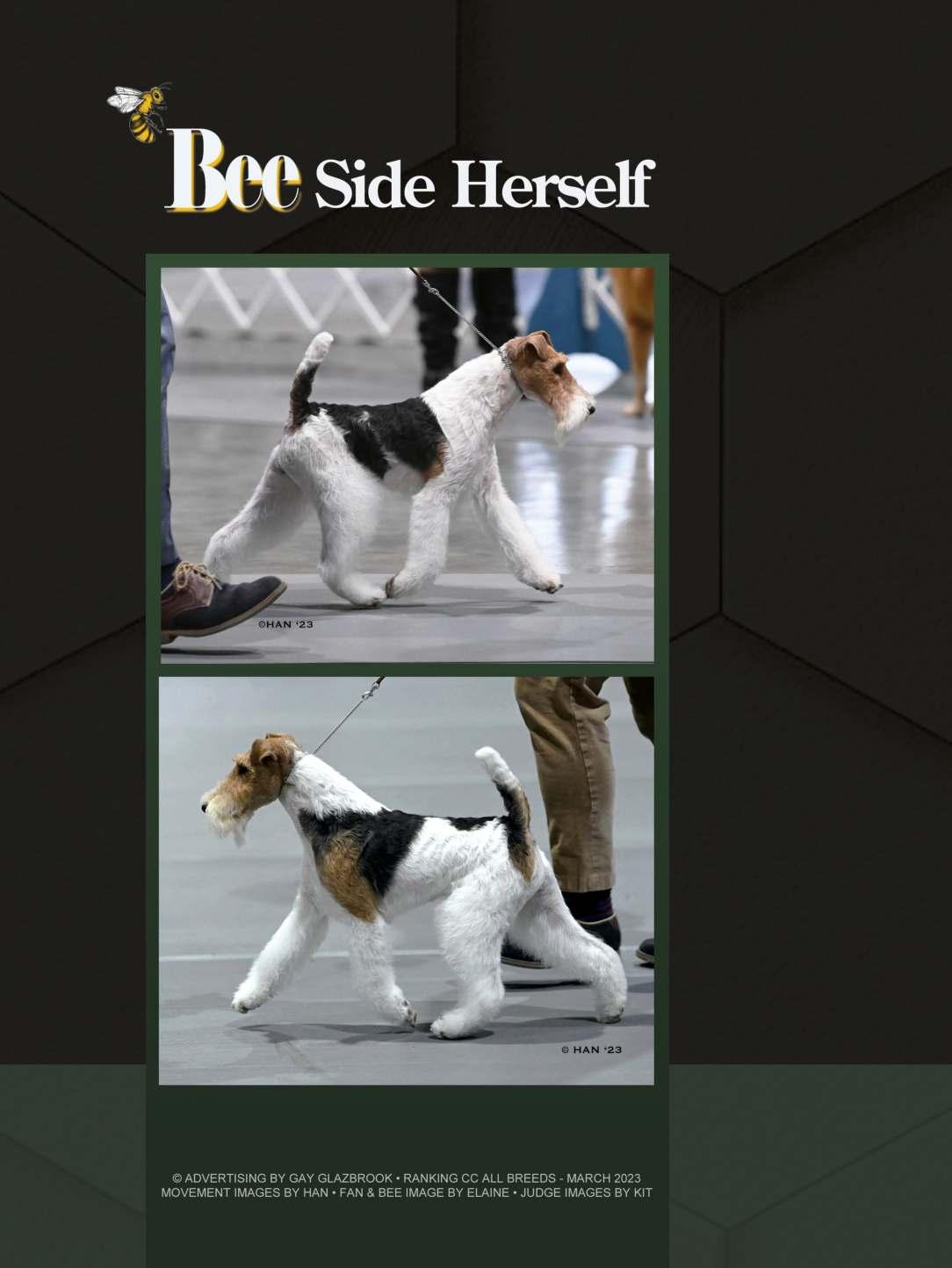











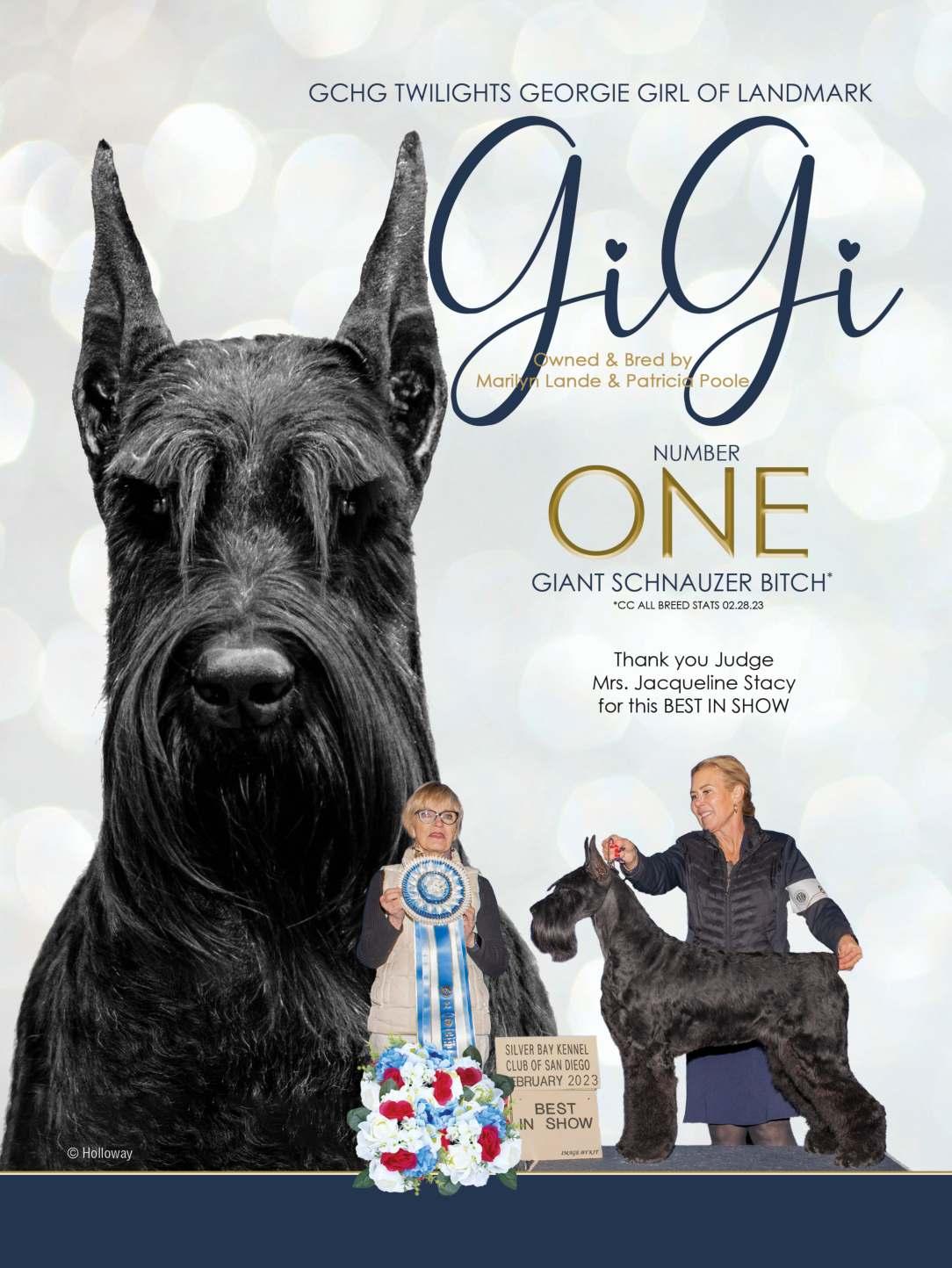

RINGSIDE CRUFTS 2023
 photo credits: Beltran Hortiguela
click
photo credits: Beltran Hortiguela
click

GUNDOG group

Am Gch Kan Trace Very Cheeky Chic
Breed: Lagotto Romagnolo
Owner: Mrs S & Mr A Zdunic Sinkovic & Lucin
Vdh Ch Amscot Love Is in The Air
Breed: Gordon Setter
Owner: Mrs J Collins-Pitman
GSh Ch Lapema Masquerade at Sandylands
Breed: Labrador Retriever
Owner: Mr E & Mrs E Casey & Jayes
Sh Ch Curlyco My Hot Rockstar
Breed: Irish Water Spaniel
Owner: Mr J Hackett
BEST IN SHOW MAGAZINE 66 RINGSIDE CLICK · CRUFTS
2023
Judge: Gordon Haran
1 3 2 4

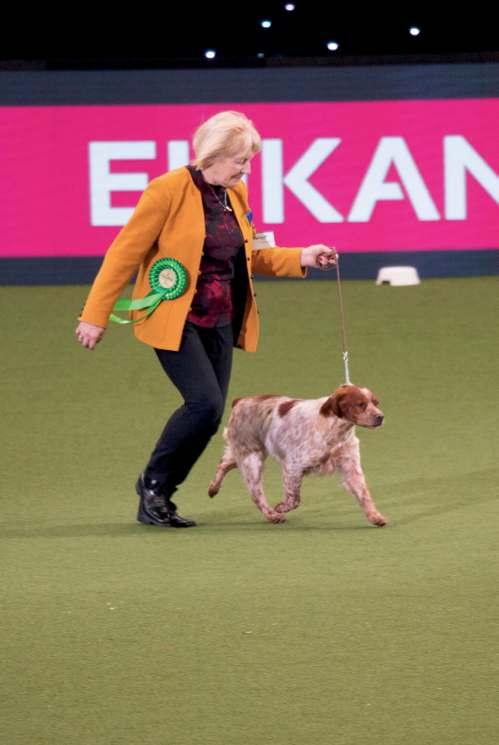


BEST IN SHOW MAGAZINE 67 RINGSIDE CLICK · CRUFTS 2023
HOUND group
Ch Sade Paris
Breed: Irish Wolfhound

Owner: Mr C & Mrs J Amoo
Ch Forget-Me-Not V Tum-Tum’s Vriendjes
Breed: Grand Basset Griffon Vendeen
Owner: Mrs A N Huikeshoven
Multi Ch Vaskurs Moni Maker Qiwidotter
Breed: Pharaoh Hound
Owner: Mr T & Mrs S Torres
Ch Annavah Princess Tiana
Breed: Beagle
Owner: Miss L A & Mrs P J Havard
BEST IN SHOW MAGAZINE 68 RINGSIDE CLICK · CRUFTS 2023
Judge: Mike Caple
1 3 2 4




BEST IN SHOW MAGAZINE 69 RINGSIDE CLICK · CRUFTS 2023
PASTORAL group
Judge: Renée Sporre-Willes
Grk Gr Ch Airzeppeline Delia
Breed: Old English Sheepdog

Owner: Mr N. Kanales
Etched in Sand by The Lake
Breed: Border Collie
Owner: Miss Sólyom
Ch Hawksflight Pure Envy with Domburg
Breed: Belgian Shepherd Dog Groenendael
Owner: Mrs L & Miss S Lester & Smith
Ch Nikara Sweet Dreams for Kimeekasams
Breed: Samoyed
Owner: Mr P J & Mrs B Johnson
BEST IN SHOW MAGAZINE 70 RINGSIDE CLICK · CRUFTS 2023
1 3 2 4




BEST IN SHOW MAGAZINE 71
TERRIER group
Ch Blanca Vd
Schoenen Bergen
Breed: Fox Terrier (Wire)

Owner: Mr F W Schoneberg
Ch Otterbobs Tolson
Breed: Border Terrier
Owner: Mr J R & Mrs H Gilpin
Jap Ch Monamour Hot Dancer at Saredon
Breed: Jack Russell Terrier
Owner: Mr J & Mr A Averis & Barker
Ch Conekesheved Too Shy JW
Breed: Bedlington Terrier
Owner: Mr J & Mrs L Mcnally
BEST IN SHOW MAGAZINE 72
RINGSIDE CLICK · CRUFTS 2023
Judge: David Guy
1 3 2 4


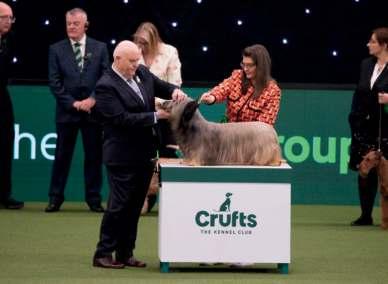

BEST IN SHOW MAGAZINE 73 RINGSIDE CLICK · CRUFTS 2023
TOY group
Judge: Paloheimo Segersven
Ch Ellemich American Express
Breed: Cavalier King Charles Spaniel

Owner: Mrs M & Miss T Chapman & Ireland
Jp/dk/se/fi/no Ch Bramver’s Millionaire
Breed: Chihuahua (Long Coat)
Owner: Mrs Irene Peeker
Ch/multi Ch Royal Precious Jp’s F4 Conan
Breed: Yorkshire Terrier
Owner: Mrs Obana
Ir Ch Eryanto’s The Great Guinness Denemore
Breed: Papillon
Owner: Mr S & J Carroll & Newman
BEST IN SHOW MAGAZINE 74
RINGSIDE CLICK · CRUFTS 2023
1 3 2 4
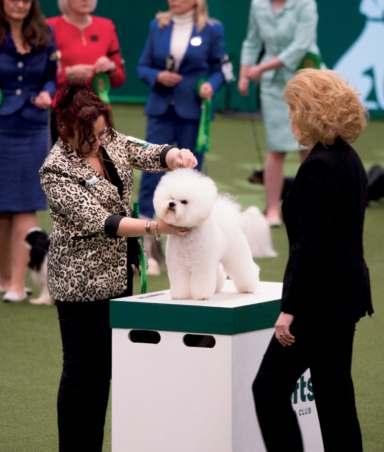



BEST IN SHOW MAGAZINE 75 RINGSIDE CLICK · CRUFTS 2023
UTILITY group
Judge: Mark Cocozza
Ch Huffish Rewrite The Stars with Atastar
Breed: Poodle (Standard)

Owner: Mr P Langdon
Sh Ch Dai Kichi Go Shun’you Kensha
Breed: Japanese Akita Inu
Owner: Miss S Exposito
Jp Ch Joker Land’s First Call
Breed: Miniature Schnauzer
Owner: Mr M Uryu
Int Ch Kool Kashmir from Kwaitang
Breed: Chow Chow
Owner: Mrs M. & Mr M. Kvetny & Lunau
BEST IN SHOW MAGAZINE 76
RINGSIDE CLICK · CRUFTS 2023
1 3 2 4




BEST IN SHOW MAGAZINE 77 RINGSIDE CLICK · CRUFTS 2023
WORKING group
Breed: Dobermann
Owner: Mrs A J & Mr N D Everley & Hughes
Breed: Russian Black Terrier
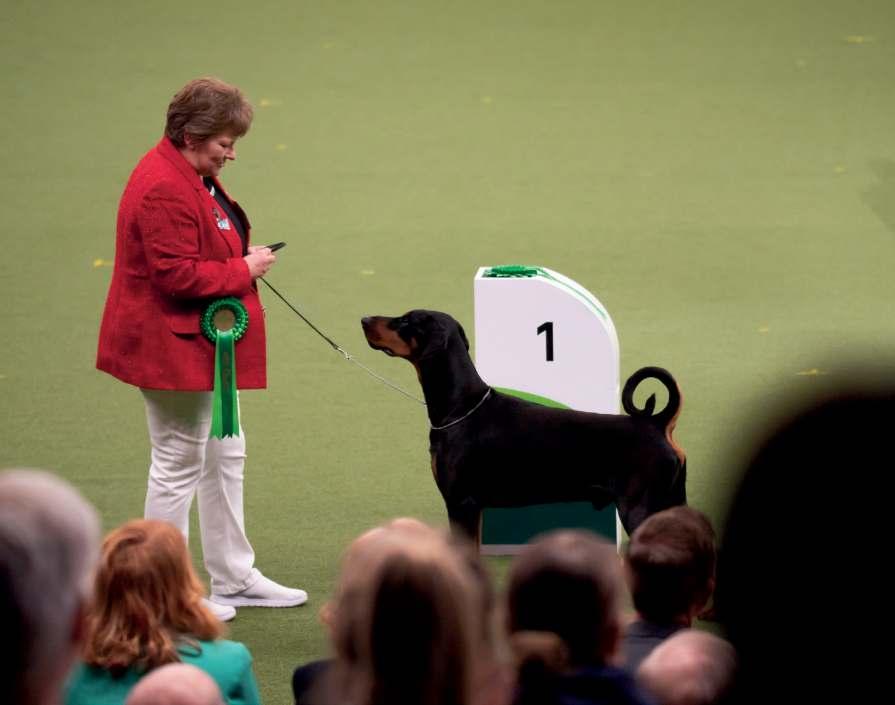
Owner: Mrs Misse Turkiewicz
Fr Ch Rongshai Du Domaine De Toundra
Breed: Tibetan Mastiff
Owner: Mrs S Haeffele
Snowshoes Who Dares Wins
Breed: Alaskan Malamute
Owner: Mrs J E & Miss J Smith
BEST IN SHOW MAGAZINE 78
RINGSIDE CLICK · CRUFTS 2023
Judge: Ann Ingram
Ch Manzart Wise Guy
Ch Sotsvetie Tverdynya Bogatyr Jpolch Jbych
1 3 2 4

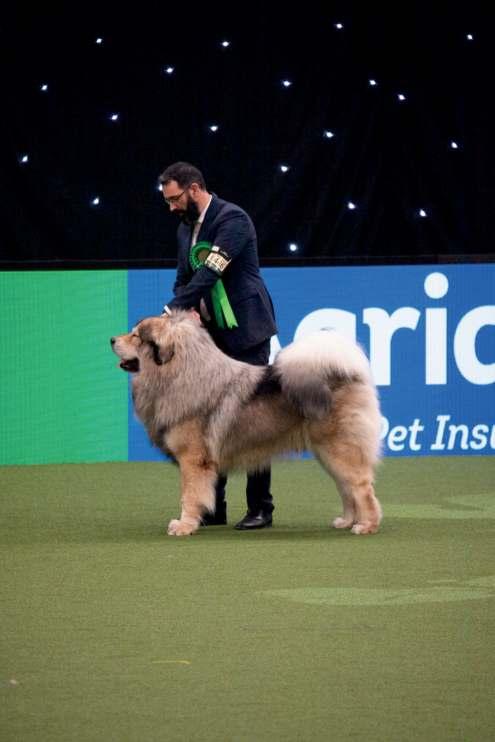
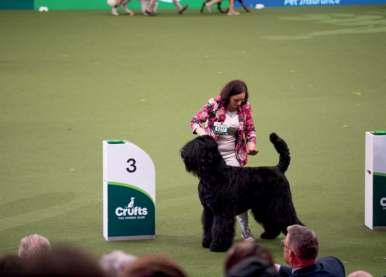

BEST IN SHOW MAGAZINE 79 RINGSIDE CLICK · CRUFTS 2023
BEST IN SHOW

BEST IN SHOW MAGAZINE 80 RINGSIDE CLICK · CRUFTS 2023
RESERVE BEST IN SHOW
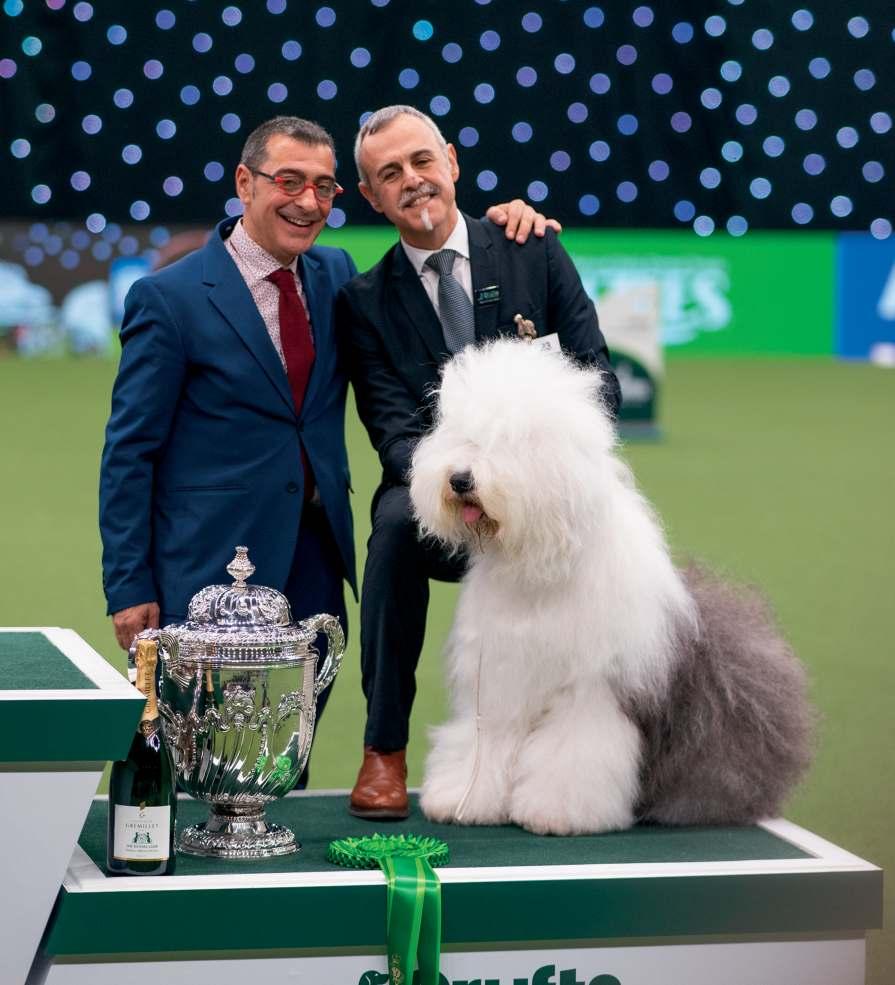
BEST IN SHOW MAGAZINE 81 RINGSIDE CLICK · CRUFTS 2023






RÉMY Smith-Lewis
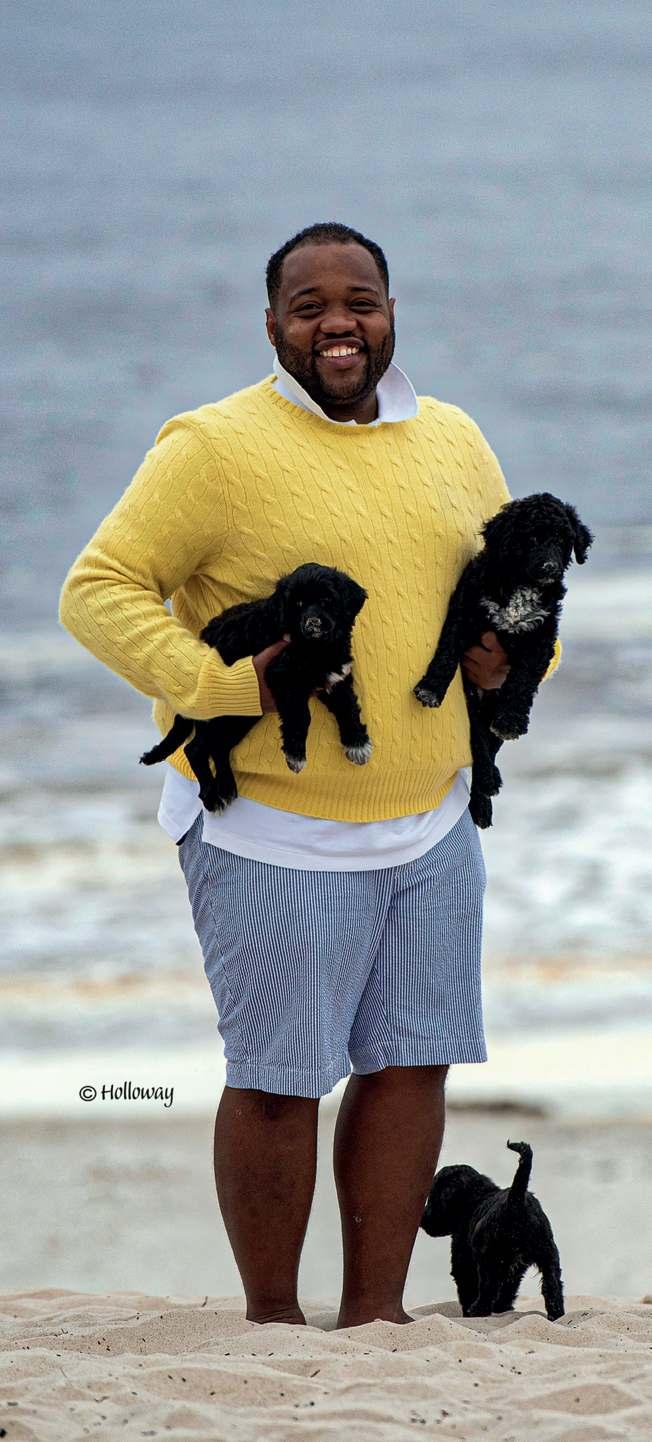
RÉMY SMITH-LEWIS
Dear Remy, first of all, thank you for taking the time for this interview. For the beginning, please tell our readers how you got involved in the world of pedigree dogs.
When I was 10, my mother took me to my first dog show in San Francisco at the Cow Palace. It was the Golden Gate KC Dog Show, and I was like a kid in a candy store. I met so many people and asked lots of questions. I met a married couple who bred PWDS and told them that I really wanted to show dogs, and the rest was history.

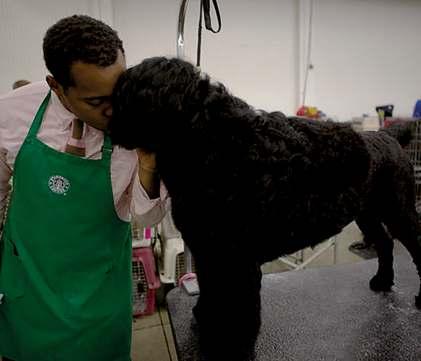
You used to work for some great names at your very beginnings. Please mention some of them and the best qualities you have learned working for them.
The first handlers I ever worked for were Mark and Sally George, and that is where I learned the foundation of animal husbandry and dog shows. Before I went off to college, I worked for Roxanne and Jessy Sutton, and sometime before that when Roxanna lived in CA. During college and after for a few years, I worked for Bill and Taffe McFadden. I also spent lots of time around Ivonne and Gabriel Rangel. I learned amazing things from all of these so-talented people, from trimming, conditioning dogs, training, breeding and picking puppies, and so much more, including life lessons. Another person who I have to mention and was an amazing mentor, friend, and all of the above was Chris Burke. We lost him too soon, andImisshimeveryday.Ilearnedsomuchfromhim,and he goes down in my life as one of my most instrumental teachers.
FROM THE OWNER HANDLER LEASH
BEST IN SHOW MAGAZINE 89
How did you get involved in PWDs, where did you get your foundation PWD, and which people from the sport do you work with today?
I became friends with a client of Mark & Sally named Julie Conger, and when they retired, I began showing dogs for her. She had a bitch that she wanted to breed again and asked me to select a stud dog for her. After selecting a stud dog, we agreed that I would sign on as a co-breeder of the litter, and the rest is history. Between Julie and Mike and Cathy Dugan, is where I got the foundation of my breeding program. Today, I work with various people in the sport, but I am especially grateful for my mentor Chris Burke, who taught me so much about the breed.
What do you consider your highlight in showing and breeding PWDs?
I think the biggest highlight for me is being a breederowner-handlerandknowingthatIcreatedandI’mapart of the dog that I’m showing’s life in every avenue. For
me, it is the most rewarding feeling, especially showing in the bred-by class. When it comes to breeding, I love the ability to provide families with quality dogs and share the love of this amazing breed with them.


Please mention some of your most successful dogs, owned or bred by you. (show ring, litter box, and/or stud.)
I have been very blessed to have owned some MBIS & MBISS winners, but my proudest moment was with GCH Aviator’s Lady’s Man De Remis. I also have a few young girls that I am excited about, including Remis’ I Will Always Love You, who finished with placements in groups from the classes.
Which part of the world has the strongest quality PWDs at the moment?
I think our health testing is hands down the best. As a breed, we are all on top of making sure we test all our dogs and are mindful of it when selecting stud dogs.
What is your favorite show to attend anywhere in the world, and why?
I have a few favorite shows. Harvest Moon Classic is one of them as I have been a member for the past 10+ years, and we have a really good group of hardworking dog people. Westminster has always been a favorite of mine since I was a kid watching it on TV, and now that I am abletoattend,Ijustloveit.ThePWDNationalisanother show that I enjoy attending as it is always good to see other breeders and talk to them about their breeding programs. Lastly, I would say SBKC as a newer member. I enjoy the weekend and all the events and history that go along with the show, and what better place for a show than beautiful Santa Barbara in the late summer.
BEST IN SHOW MAGAZINE 90
FROM THE OWNER HANDLER LEASH

Would you rather show at specialties or all-breed shows? Please give reasons for your preference.

I enjoy both for certain reasons. All-breed shows are fun because you get to compete against other dogs in the working group and hopefully win Best in Show. You also get to show to a more varied panel of judges, and I always look forward to seeing all my friends and family outside of my breed. Specialties are great because you get to see the depth in quality of the breed, and it’s alwaysagoodtimetobearoundotherbreedersandtalk about dogs.
The purpose of dog showing was (and should still be) to evaluate and “show off” breeding stock. Do you think for some breeders/owners, it is becoming more about ribbons and rankings?
I think with anything that involves competition and passion,prioritiescanshift.Itisimportanttoremember the purpose of dog showing and to prioritize the evaluation and improvement of breeding stock over ribbons and rankings.
What are your hobbies outside of the world of dogs?
Sipping coffee in the quiet of the morning and enjoying aglassofwineattheendofalongdayarethehighlights of my day. I am always on the search for the next best restaurant and dining experience. In the words of the late Michael Broadbent, “Drinking good wine with good food in good company is one of life’s most civilized pleasures.”
What is your escape during the weekends when you are not traveling to shows?
I enjoy cooking and smoking meats. I spend most of my
free weekends doing one of the two.
Is there advice you would like to give to Professional Handlers, Owner/Handlers, and judges?
I would advise Professional Handlers and Owner/ Handlers to prioritize the welfare and well-being of the dogs in their care above all else. Judges should always prioritize the breed standard and evaluate each dog based on its individual merits rather than comparing it to other dogs in the ring.
What are your future goals in the sport of pedigree dogs and the world of PWDs?
My future goals in the sport of pedigree dogs and the world of PWDs are to continue breeding beautiful dogs that fill my eye and are both mentally and physically sound. I also hope to continue mentoring and educating others in the breed to help ensure a bright future for PWDs.
BEST IN SHOW MAGAZINE 92 THE PEKIGNESE · HISTORY IN ENGLAND
FROM THE OWNER HANDLER LEASH





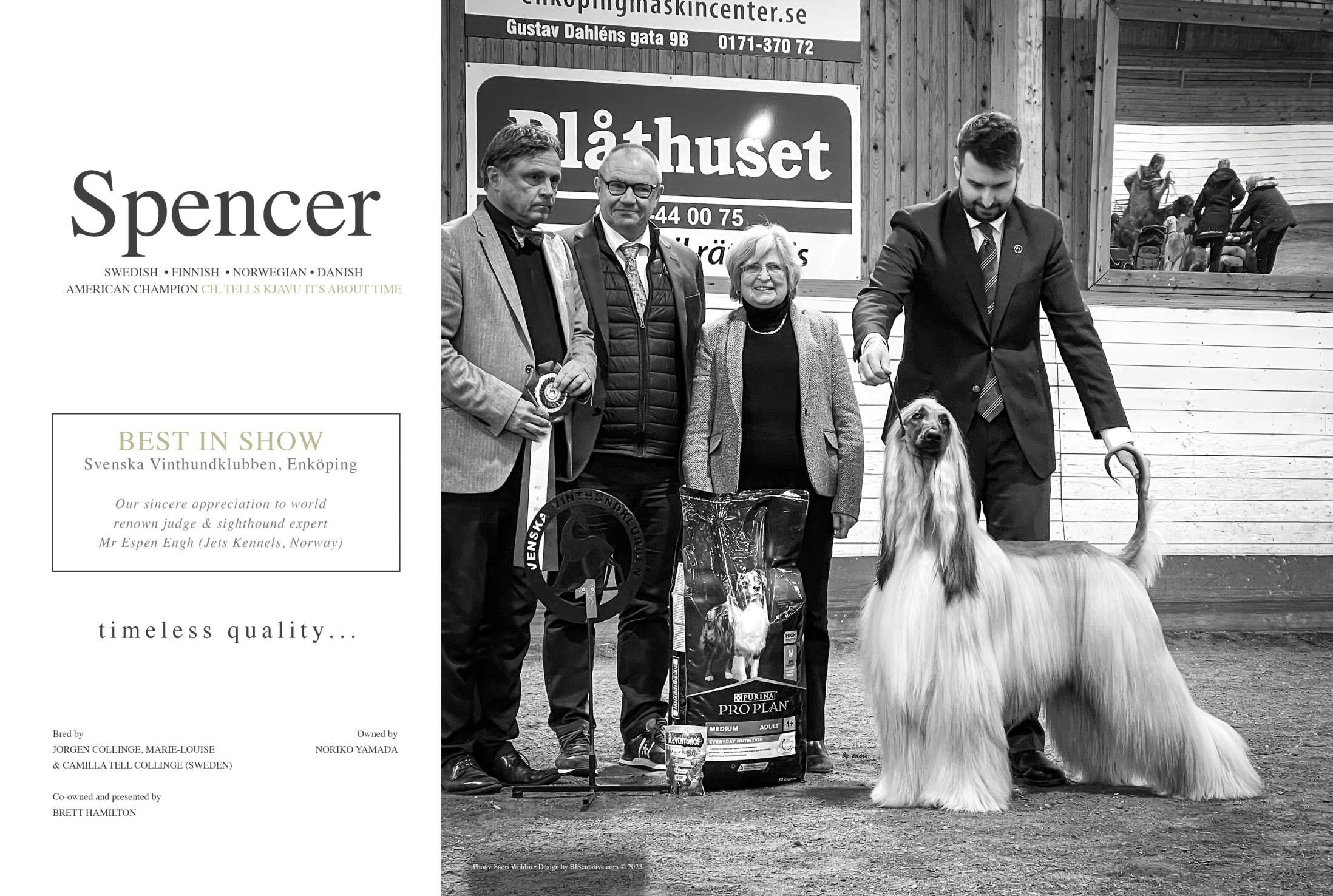





ENGLISH TOY SPANIEL & CAVALIER KING CHARLES SPANIEL Meet THE BREEDS:
INTERVIEWS 108 CAROLINE BOWLES-ROBINSON BALDRAGON ENGLISH TOY SPANIEL 116 DOUG JOHNSON & JAIME HUBBARD CLUSSEXX ENGLISH TOY SPANIEL 126 JEROME ELLIOT CHERI-A’S ENGLISH TOY SPANIEL 136 RICHARD LEBEAU BEAUPRIX ENGLISH TOY SPANIEL 144 ERICA & RACHEL VENIER ORCHARD HILL CAVALIER KING CHARLES SPANIEL 156 KEVIN CLINE FORESTCREEK CAVALIER KING CHARLES SPANIEL 164 MICHELLE CHAPMAN & TANYA IRELAND ELLEMICH CAVALIER KING CHARLES SPANIEL 170 PAULA AYERS BROOKHAVEN CAVALIER KING CHARLES SPANIEL
A Comparison of the English Toy Spaniel and the Cavalier King Charles Spaniel
By Cindy Huggins
Many people are unable to recognize the difference between the English Toy Spaniel and the Cavalier King Charles Spaniel. They are two entirely different breeds and apart from sharing the same coat colors, have totally separate breed standards, characteristics and identities.
A Brief History
The Cavalier King Charles Spaniel as we know it today was not given official AKC recognition until 1996. The English Toy Spaniel, whose history has been documented since the 15th Century has its origins in the courts of Europe, gained official AKC recognition in 1886. In 2006 there were 161 English Toy Spaniel litters registered with the AKC while the litter registration for
Cavalier King Charles Spaniels exceeded 4,000.

The first written reference to the King Charles Spaniel was around 1570. Named after King Charles II, was originally a small sporting spaniel with long muzzle. In the 1800’s they were bred with an oriental short nosed spaniel to produce the modern King Charles Spaniel known in America as the English Toy Spaniel. The longer nosed King Charles Spaniel was given separate breed status in 1945 named the Cavalier King Charles Spaniel.
What you must keep in mind when reading the Cavalier King Charles Spaniel standard is that it was written in a way to distinguish the difference between the English Toy Spaniel and the Cavalier King Charles Spaniel.

BEST IN SHOW MAGAZINE 104
General Appearance
The English Toy Spaniel is a compact, cobby and essentially square toy dog possessed of a short-nosed, domed head, a merry and affectionate demeanor, and a silky, flowing coat. The Cavalier King Charles Spaniel is an active, graceful, well-balanced toy spaniel, very gay and free in action, fearless and sporting in character, yet at the same time gentle and affectionate. The head exemplifies the important characteristics of the English Toy Spaniel. The importance of the breed characteristics for the Cavalier King Charles Spaniel is a gay temperament, combined with true elegance and royal natural appearance with no trimming, sculpting or artificial alteration of the dog or coat.


Size, Proportion, Substance
The English Toy’s desirable weight for an adult is 8-14 pounds. The Cavalier’s desirable adult weight is 13-18 pounds.TheCavalierheightis12-13inchesatthewithers with moderate bone in proportion to size. The English Toy is compact, and essentially square in shape built on cobby lines, sturdy of frame, solidly constructed. The Cavalier body approaches squareness, yet if measured from point of shoulder to point of buttock, is slightly longer than the height at the withers.

Head, Muzzle and Mouth

TheEnglishToyheadislargeincomparisontosize,with a plush chubby look. The Cavalier head is proportionate to size of dog, appearing neither too large nor too small for the body.
The English Toy’s skull is high and well domed, full over eyes. The Cavalier skull is almost flat between the ears.

BEST IN SHOW MAGAZINE 105
MEET THE BREED
The English Toy muzzle is very short with nose well laid back whereas the length of a Cavalier muzzle from base of stop to tip of nose is about 1 ½ inches.
The English Toy has a deep well-defined stop. The Cavalier stop is moderate.
The English Toy ears are very long, set low and close to the head. The Cavalier ears are set high but not close on top of head.


The English Toy eyes are large, very dark brown or black and set squarely on line with nose. The Cavalier eyes are large, round and well set apart with dark rims.
The English Toy should have a slightly undershot bite with a square, broad deep and well turned up jaw. A wry mouth should be penalized. The Cavalier has a perfect, regular scissors bite. A fault in the Cavalier is undershot bite, weak or crooked teeth or crooked jaw.
Neck, Topline, Body and Tail
The neck on an English Toy is moderate in length, nicely arched. The Cavalier neck is fairly long, without throatiness,muscledenoughto formaslightarchatthe crest.
The topline on both breeds is level.
The body for an English Toy is short, compact, square and deep on cobby lines with a broad back. They should be sturdy of frame with good rib and deep brisket. The Cavalier body is short-coupled with ribs well sprung but not barreled. The chest is moderately deep, extending to elbows. Slightly less body at the flank than at the last rib but with no tucked up appearance.
The English Toy tail is docked to 2-4 inches in length and carried at or just slightly above the level of the back. The set of the tail is at the back’s level. Many are born with a shorter or screw tail, which is acceptable. The feather on the tail should be silky and from 3-4 inches in length, constituting a marked “flag” of a square shape. The tail and its carriage is an index of the breed’s attitude and character. The Cavalier tail is well set on, carried happily but never much above the level of the back and in constant characteristic motion when dog is in action. Docking is optional but if docked, no more that 1/3 is to be removed.
Coat and Colors
The English Toy is profusely coated, heavy fringing on the ears, body and on the chest, and with flowing featheringonboththefrontandhindlegsandfeathering on the feet. The coat is straight or only slightly wavy with a silken, glossy texture. Over trimming of the body, feet or tail fringes should be penalized. The Cavalier is of moderate length, silky, free from curl. A
BEST IN SHOW MAGAZINE 106 MEET THE BREED
slight wave is permissible. Feathering on ears, chest, legs and tail should be long and the feathering on the feet is a feature of the breed. No trimming of the dog is permitted. Specimens where the coat has been altered by trimming, clipping, or by artificial means shall be so severely penalized as to be effectively eliminated from competition.
As of March 29, 2023, the Cavalier standard will change to add a disqualification. The allowed colors are Black and Tan, Blenheim, Ruby, and Tricolor. “Dogs not of an allowed color shall be disqualified”.
Blenheim
The Blenheim color for both breeds consist of pearly white ground with deep red or chestnut markings. The Cavalier standard states a clear pearly white ground. The English Toy standard states it is preferable that
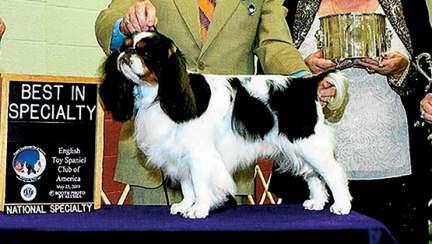



there be red markings around both eyes. The Cavalier standard calls for the color be evenly spaced on the head surrounding both eyes.
FortheEnglishToytheblack,whiteandtancolorpattern is called Prince Charles whereas the Cavalier calls this pattern a Tricolor. Both standards read the same calling for a pearly white ground with evenly spaced black patches, solid black ears and black face markings. The English Toy standard states it is preferable that there be blackmarkingsaroundbotheyes.TheCavalierstandard states the pearly white ground be clear and the color evenly spaced on the head and surrounding both eyes. Both standards call for rich tan markings over the eyes, inside the ears and under the tail. The English Toy standard calls for rich color on the face. The Cavalier standard specifically calls for rich tan on the cheeks.
BEST IN SHOW MAGAZINE 107
Tricolor – Prince Charles
MEET THE BREED
Black and Tan – King Charles

Gait

The black with mahogany tan markings for the English Toy is call the King Charles. The same color pattern for the Cavalier is the Black and Tan. Both standards read much the same with the exception of the presence of a small white chest patch about the size of a quarter, or a few white hairs on the chest of a King Charles is not to be penalized; any white marks on a Cavalier is a fault.



The Cavalier is free moving and elegant in action, with good reach in front and sound, driving rear action. The English Toy is elegant with good reach in front, and sound, driving rear action. The gait, as a whole is free and lively, evidencing stable character and correct construction.
Temperament
TheRubycolorforbothbreedsconsistofrichmahogany red. The English Toy allows for the presence of a small white chest patch about the size of a quarter or a few white hairs on the chest of a Ruby Spaniel are not to be penalized. For the Cavalier any white marks are a fault.



The English Toy Spaniel is a bright and interested little dog,affectionateandwillingtoplease.TheCavalierKing Charles Spaniel is gay, friendly, non-aggressive with no tendency towards nervousness or shyness. Bad Temper, shyness, and meanness are not to be tolerated and are to be so severely penalized as to effectively remove the specimen from competition.
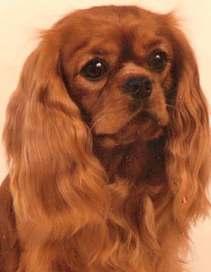
BEST IN SHOW MAGAZINE 108
Ruby
MEET THE BREED


MEET THE BREED ENGLISH TOY SPANIEL CAROLINE BOWLES-ROBINSON BALDRAGON King Charles Spaniel

Please tell our readers how you got involved with the world of pedigree dogs, the King Charles Spaniel, and dog showing/breeding.
As a child, I grew up with an assortment of different dog breeds: Pugs, Pekingese, miniature and standard wirehaired Dachshunds, and Jack Russell Terriers. My family was also involved in the horse racing world, which I believe gave me an eye for conformation and movement from an early age.
The first breed I handled was a Whippet belonging to a friend, and from there, I was hooked. I started showing regularly in 1982 with my foundation breed,
English Springer Spaniels, for which I now award CCs. I have also owned and shown English and American Cockers, a Gordon Setter, and a Sussex Spaniel.
My affix Baldragon comes from the Scottish Munros, which my first husband, an avid hill hiker, would walk.
In early 2002, my mum came to live with me. She was used to small dogs, so I decided to find a breed she could enjoy as a lapdog. I wanted a Spaniel, a female, and one of quality I could show. I spoke to the famous Diana Schilizzi (Chacombe), who I had known since she awarded one of my English Springers Best in Show. Mrs. Schlizzi suggested I visit the 2004 Welsh Kennel Club Show, where she was awarding CCs. I watched the judging and, upon completion, was introduced to breeders of King Charles Spaniels.
BEST IN SHOW MAGAZINE 111
Where did you get your foundation King Charles Spaniel, and what breeders (if any) do you work with today?



AttheWelshKennelClubshowmentionedabove,Imet Ros Baker, who had been awarded the Dog CC by Mrs. Schlizzi with a Blenheim, Cofton Golden Dandelion. She had a litter of pups just a few days old and, at the time, was unable to keep one. My luck was in, as I was able to choose a beautiful tricolor female who was reserved and shy as a puppy but, with the influence of my gundogs, soon developed a positive and outgoing personality. This was Cofton Chic Avec Baldragon. A wonderful lady called Ann East invited me to look at her litter, amongst which was the most outstanding puppy bitch. I could not refuse to buy her; this was CH Nastane Miss Dior Avec Baldragon JW, who was to become my first Champion KCS, gaining 11 CCs and numerous RCCs. Her sire was the famous Ch Tewhit Typhoon, and her dam was Ch Nastane Sweet Fanny Adams. She is the foundation of most of my breeding and a grandmother of CH Baldragon She Demands JW. I am passionate about good movement and believe this comes from my horse and gundog ownership. I admire the great movement produced by Yana Nevskaya and Alexander Gilevich’s kennels, and I specifically chose their breeding to import a dog with exceptional rear action. His outbred pedigree offers my lines and UK stock an opportunity to open the close gene pool we have here. I think it’s essential to work with passionate breeders to introduce healthy new lines and help think twice before breeding too closely.
What breed hallmarks/key characteristics do you aspire to produce in each new generation of puppies?
BEST IN SHOW MAGAZINE 112
MEET THE BREED · ENGLISH TOY SPANIEL
Large dark eyes, all set in alignment with ears and nose. A larger head, as I do believe we are losing this trait. Very important to me are well-flared nostrils, soundness, and temperament.
How have King Charles Spaniel changed since you first started showing/breeding?
Heads are becoming smaller, and bone on many exhibits is lacking. Presentation has improved. Toplines and movement have improved, but there is still room for progression in this area.
What are some of your proudest achievements to date in the world of King Charles Spaniel?
My proudest achievements are:
- My record-holding female CH Baldragon She Demands JW, who was awarded Best of Breed at Crufts and shortlisted in the Toy Group.
- Breeding and enjoying others make up numerous Baldragon Champions.
- Introducing new exhibitors to the breed.
- My young male Champion gaining huge recognition, being placed in groups at CH shows, shortlisted at Crufts at just over a year old. The success of his offspring in the UK and abroad.
- Winning CACIB at the World show.
- Winning Best in Show at the Northern King Charles Spaniel Club anniversary show.
- The honor of awarding CCs in the breed and CACIBs abroad.
There are so many more proud moments, too numerous to mention.
Please name three King Charles Spaniel that you wished you had owned/bred. These can be any dogs at any point in history.
They would be Tewhit Trafalgar, Maibee Mr Kipling and Tudorhurst Morgana.
How would you describe a correct head for a King Charles Spaniel?
A head slightly larger in comparison to the body, with a distinct difference between dog and bitch, not too domed in skull. Large dark eyes all set in alignment with ears and nose.
What do you wish all judges knew about the King Charles Spaniel before judging them?
That they understood the standard and did not just read it.

BEST IN SHOW MAGAZINE 113
MEET THE BREED · ENGLISH TOY SPANIEL
Do you judge? Please could you share some special judging appointments with our readers.
I have been privileged to award CCs but am still awaiting that special one!
Is there a country where you believe the breed is particularly strong at the moment?
I believe it would be Russia, for health, soundness, and movement.
There are 4 recognized colors for King Charles Spaniel, namely Blenheim, Ruby, Black & Tan (King Charles in the USA), and Tricolor (Prince Charles in the USA). Is there a difference in quality between the colors? Do you find it’s more difficult to produce a quality English Toy Spaniel in one particular color over another?
I am not qualified to comment, as I have only bred parti-colors. From a showring perspective and in the
UK, I would rate the quality in colors in the following order, as it stands now: Tri, Blenheim, B/T, and Ruby.
What advice or words of wisdom would you like to give to newer people who have discovered the King Charles Spaniel?
Enjoy the uniqueness of this charming breed; you will never stop learning.
What are your future goals/wishes in the sport of pedigree dogs and the world of King Charles Spaniel?
In the UK, I would love to see a return to the sportsmanship that once was. In the KCS, to keep progressing in the right direction, improving all the time in health and soundness without losing the original breed traits. I will continue to strive to produce sound quality King Charles with correct unique heads and physical attributes as closely as I am able to the country of origin’s breed standard.

BEST IN SHOW MAGAZINE 114
trust them with just anyone when they need to travel?
“Signature Pet Transport is the only one we trust with our Cavaliers.” —Patty Kanan
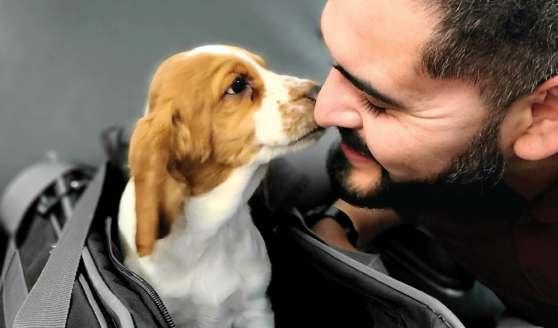


Our licensed, professional pet travel guardians know what it takes to safely and comfortably deliver your Cavalier or other breed to where it needs to go.
BEST IN SHOW READERS: enjoy an exclusive discount of $50 off a domestic U.S. transport, or $100 off any other transport + FREE travel insurance valued at up to $197.


★ ★ ★ ★ ★
BOOK TODAY AT: SIGNATUREPETTRANSPORT.COM/BIS
Signature Pet Transport Owner Christian Diaz with “Romeo” CH Kell’s Besame Mucho





MEET THE BREED ENGLISH TOY
SPANIEL
DOUG JOHNSON & JAMIE HUBBARD CLUSSEXX
English Toy Spaniels
Please tell our readers how you got involved with the world of pedigree dogs, the English Toy Spaniel, and dog showing/breeding. (Please mention your kennel name, its meaning, and any other breeds you are involved with.)
As a teenager, Doug was working after hours at a vet clinic. This is when he first saw a Clumber Spaniel, which led to a lifelong passion for this breed. Over the years, the introduction of some of the other Sporting Spaniel breeds (Sussex Spaniels and Welsh Springer Spaniels) would evolve and eventually, the King Charles Spaniel was added to the breeding
program of Clussexx Kennel (most people figure out that the Clussexx name came from a combination of the Clumber and Sussex Spaniel). Jamie’s background is a little different. Australian-born, his parents showed Basset Hounds, but he quickly started his own breeding program of American Cocker Spaniels. In 2004, he moved to the USA. It was at this time that their Clumber Spaniel handler was also showing a King Charles, and they were instantly enamored with the breed.
Where did you get your foundation English Toy Spaniels, and what breeders (if any) do you work with today?
The dog shown by their Clumber Spaniel handler was a Royalist dog bred by Christina Van Patten. He was Ch Royalist Ready to Reign, and Christina was kind enough to let them own him. After his 16 All Breed Best in Shows, he retired to their home and became a very influential sire for Clussexx, still to this day. They also acquired 2 bitches from Des Troi Malletts. The combination of these lines produced beautiful dogs, even right from the onset; their first litter produced Ch Clussexx Champagne Breakfast, a champion in many countries, Crufts and World Dog Show Best of Breed winner, and producer of many fine examples across the world. As a result of his travels, some breeders were smart enough to breed to him, most successfully Yana Nevskaya from Russia. She capitalized on his merits, and today they closely work with her to maintain the quality in their breeding program.
What breed hallmarks/key characteristics do you aspire to produce in each new generation of puppies?
BEST IN SHOW MAGAZINE 121
The first time they attended the National Specialty in the USA, it was evident that the breed lacked soundness and temperament. It became a goal to produce dogs with breed characteristics, but also raise them to be happy, sound physically and mentally, and healthy. Combining these things with the correct head, short cobby bodies with the correct size and bone was a challenge they were willing to work towards.
How have English Toy Spaniels changed since you first started showing/breeding? This can be in quality and or presentation.
Doug and Jamie believe their breeding goals changed the way other breeders approached their own breeding programs. The days of Charlies crawling around on their bellies were fast disappearing, and today, the temperament and movement have greatly improved. The overall physical condition of the dogs is much greater. The American dogs have generally been presented well, but they have noticed many of the European breeders are also putting work into their dogs’ presentation, instead of the old days where the dogs weren’t even bathed/groomed for the show.
What are some of your proudest achievements to date in the world of English Toy Spaniels?

Asbreeders,producinghealthy,sounddogswithgreat temperaments has been their greatest achievement. Watchingdogswithgreatqualitieswinninginthering that have Clussexx dogs in their pedigrees is a huge acknowledgment that their own breeding program has positively impacted other breeding programs. In terms of the dogs themselves, they are proud of

BEST IN SHOW MAGAZINE 122
MEET THE BREED · ENGLISH TOY SPANIEL
many of their achievements. Ch Royalist Ready to Reign winning 16 Best in Shows, his son Ch Clussexx Champagne Breakfast winning across the world, another son Ch Clussexx Paddington of Flivverway placing in the group at Westminster Kennel Club and winning the breed’s National specialty in Russia, a Champagne Breakfast son Ch Clussexx Cream and Crimson winning the USA National Specialty along with 5 All Breed Best in Shows, and finally Cooper, Ch Ringo Star Ot Nevskogo Hobbita (a Champagne Breakfast grandson) who was America’s #1 Toy All Breeds in 2022 and has now amassed 32 All Breed Best in Shows in addition to his National Specialty win in 2022.
Please name three English Toy Spaniels that you wished you had owned/bred. These can be any dogs at any point in history.
Ch Cheri-A Lady Isabella Smokey, Ch Maibee Clive, and Ch Loujon Backroad Adventure
How would you describe a correct head for an English Toy Spaniel?
There are a number of key details in the head, and achieving them all in one dog is very hard. You must strive for all of the following: the correct dome of the skull, low-set ears, large dark eyes, a nose placed high and well back into the skull, and a wide jaw with a good cushion of the muzzle. With all of that being said, the expression of the Charlie should be soft and soulful. From experience, Jamie and Doug will tell you that the expression changes greatly when you alter the dome and ear set (a flat skull with high-set ears gives a much harsher expression), so for them, getting this part of the head correct is their first priority.
What do you wish all judges knew about the English Toy Spaniel before judging them?
For those who have been around them for a long time, judges must know that the breed has progressed greatly in temperament and soundness (physically and mentally). Gone are the days when you could forgive a dog crawling around on its belly just because it had a gorgeous head.
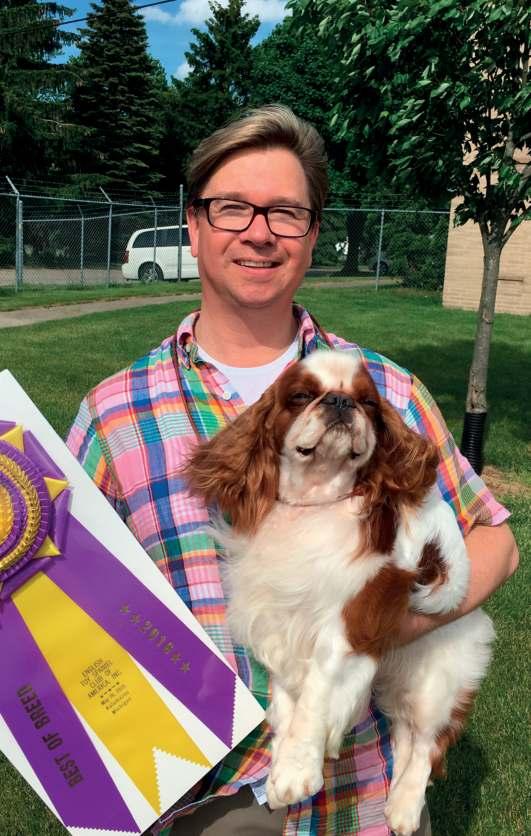
BEST IN SHOW MAGAZINE 123 MEET THE BREED · ENGLISH TOY SPANIEL
Do you judge? Please could you share some special judging appointments with our readers.

Doug and Jamie both judge quite a number of breeds across all groups. Highlights would have to be the assignments at Westminster Kennel Club and the American Kennel Club National Championship. Doug has judged the Hound and Sporting group at Westminster and the Hound group at the AKC show. Jamie has judged the Hound group at Westminster and the Sporting group at the AKC show. They also enjoy any opportunity to judge a breed’s National Specialty show.
Is there a country where you believe the breed is particularly strong at the moment?
The breed has different strengths and weaknesses in different parts of the world, so we believe there isn’t one dominant country where the quality exceeds another. Especially since in the last 10 years many dogs have been imported from other countries.
In the USA, the breed is divided into two Varieties by color, King Charles & Ruby (KC & R) and Blenheim & Prince Charles (B & PC). Would you rather they are treated as one breed like in the UK or do you prefer the divide in color when showing?
Our preference would be to have them shown as one breed.
There are 4 recognized colors for English Toy Spaniels, namely Blenheim, Ruby, Black & Tan (King Charles in the USA) and Tricolor (Prince Charles in the USA). Is there a difference in quality between the colors? Do you find it’s more difficult to produce a quality King Charles Spaniel in one particular color over another?
One of the challenges with having the colors shown separately in the USA is that breeders have kept their color gene pool separate. One of our greatest successes as breeders is combining our best solid color dogs with our broken color dogs. There are definite quality differences in the colors, so why not try to combine them? Yes, there is a risk of some color mismarks, but the physical quality rewards you can achieve far outweigh the risks.
What are your future goals/wishes in the sport of pedigree dogs and the World of English Toy Spaniels?
Finding someone to replace us is high up on the list, not that we are going anywhere soon. But there will come a time when decades of our work will have to be passed along to someone else to keep the legacy going. So far, we have been able to work with a number of people around the world (most of whom have achieved great success with Clussexx dogs in their pedigrees).
BEST IN SHOW MAGAZINE 124 MEET THE BREED · ENGLISH TOY SPANIEL




MEET THE BREED
our travels there, we saw many fine dogs, and at that time, in the late 1980s, most of the well-known names in the history of the breed were still active. The competition in the UK for this breed was fierce, with names such as Oakridges, Tudorhurst, Amantra, Maibee, Graslon, Marchog, Kilbarchan, and many others coming to mind.
ENGLISH TOY
SPANIEL
JEROME ELLIOT
CHERI-A’S English Toy Spaniels
Could you please tell our readers about how you became involved with the world of pedigree dogs, specifically the English Toy Spaniel, and dog breeding/showing?
Kindly mention your kennel name, its meaning, and any other dog breeds you are involved with.
As a child, my family owned hunting dogs such as the Irish Setter, English Springer Spaniel, and Brittany Spaniels. My interest in dog breeding and showing began when I received a dog through the Junior Showmanship program, a Brittany, which sparked my passion for dogs. It was many years later when I learned about English Toy Spaniels. In partnership with John Wood Jr, we researched and looked at many dogs in the States before deciding to go to the UK, which was the best source for the breed. During
Our kennel name, Cheri-A’s, was derived from John’s first litter from his first bitch, a Saluki named “Cher.” We bred Afghan Hounds, Brittanys, English Toy Spaniels, and Salukis, but later concentrated almost exclusively on Afghan Hounds and English Toy Spaniels. Currently, I only breed and show English Toy Spaniels, and I plan to continue doing so. Additionally, we have owned and shown Beagles, a Scottish Deerhound, and a Whippet. I have also shown many other breeds while helping friends at dog shows, which has been a valuable learning experience.
Where did you acquire your foundation English Toy Spaniels, and which breeders do you currently work with?
My first English Toy Spaniel, Ch. Oakridges the Chimes, also known as “Digby,” was obtained from Mrs. Mollie Castle of Oakridges Kennel in the UK. Digby became the top winning dog in the US for two years and was our foundation sire. He sired 10 American Champions, including Ch. Cheri-A’s Lord Andrew, who went on to win Best in Show. We also acquired valuable stock from Mrs. Doreen Cooper of Dorkazyl Kennels in the UK, with lines that blended well with Digby’s.
Other notable dogs that influenced our breeding
BEST IN SHOW MAGAZINE 129
program include Ch. Kilbarchan’s Jason from Helen Moffat of Kilbarchan Kennels and Ch. Kingscourt Beau Jo is Marchog from Kate and Ron Stewart of Marchog Kennels.
In the US, we worked with Michelle Shannon of Smokey Valley Kennels to produce a number of champions, including Ch. Cheri-A Lady Isabella Smokey Valley, who became the all-time top-winning female English Toy Spaniel in US history. In Canada, we worked with Wendy Goddyn of Wingo Kennels to produce several Cheri-A Wingo dogs, including BIS and Specialty winning Ch. Cheri-A Wingo Lord Marque, Ch. Cheri-A Wingo Lord Nelson, and GCh.

Cheri-A Wingo Lord Paddington.
After John’s death in 2020, Paddington, a notable English Toy Spaniel, went to live with Doug Johnson and Jamie Hubbard of Clussexx Kennels in the US for breeding purposes. Many exceptional puppies have been produced during Paddington’s time there, and
his progeny continue to do well. What breed hallmarks/key characteristics do you strive to produce in each new generation of puppies?
A: John and I had a good foundation for what makes a good dog, having bred Afghan Hounds, Salukis, and English Toy Spaniels for many years. We only bred dogs that were of “Specials” quality and worthy of campaigning. We prioritized the whole dog rather than individual features. John focused on structure and movement, while I tried to improve on heads, coats, and finer details. Our foundation sire, Digby, had a plain head, but his litter brother and sister had glorious heads and went on to become UK Champions. Digby’s offspring had superior heads, bodies, and make and shape.
When we started showing and breeding English Toy Spaniels, quality and presentation were lacking in our part of the Northwest United States, and the breed was largely unknown and disparaged. We made several trips to the UK to gather high-quality breeding stock for our program.
Squareness of shape, substance, and soundness (of mind and body) were lacking in many of the dogs we saw in the States. Some breeders and judges focused almost exclusively on heads, but we found that other vital components were missing. Professional presentation was also lacking, with the breed primarily being shown by owner handlers and breeder owner handlers.
For each dog we campaigned, we briskly walked them about 2 miles per day, regardless of weather, to improve their muscle tone, endurance, and overall
BEST IN SHOW MAGAZINE 130 MEET THE BREED · ENGLISH TOY SPANIEL
performance. Our dogs were bathed and groomed frequently to be in top condition for shows.
Quality is still a work in progress, with the greatest challenge being to produce the squareness of shape that the standard calls for. Many have not achieved this in their lines. Our mentoring focuses on the following characteristics: large head, substance, squareness of shape (standing and moving), and level topline (standing and moving). These traits should be immediately noticeable when glancing at an English Toy Spaniel.
What are some of your proudest achievements to date in the world of English Toy Spaniels?
Winning the Best in Show and English Toy Spaniel Club of America National with Ch. Cheri-A Lady Isabella Smokey Valley in 2000 and Best in Show and English Toy Spaniel Club of America National with GCHS Cheri-A Wingo Lord Paddington in recent years are among my proudest achievements. We had a total of six Best in Show winners, with all but one being bred by us, and all were owner handled. Our dogs helped draw attention to the breed, promoting its quality and uniqueness to judges and the public.
Paddington’s recent win in the Stud Dog Class at the National and his contributions to breeding fulfill the mission John and I started many years ago. I am grateful to Doug Johnson and Jamie Hubbard for incorporating Paddington into their program.
I have also been asked to present the breed for AKC and CKC Judges Institutes and have brought highquality dogs for hands-on examinations. Mentoring prospective judges online has also been fulfilling,
especially with the breeders being few and far between.
Please name three English Toy Spaniels that you wished you had owned/bred. These can be any dogs in any point of history.
The best overall English Toy Spaniel I have ever seen, inmyopinion,is“Elliott,”GCHSXela’sETPhoneHome, bred by my dear friend Stephanie Hill, sired by her GCH Cheri-A Wingo Lord Olivier, a dog she acquired from John and I, the dam being her GCH Clussexx Tea and Crumpets. This was a wonderful combination of lines that brought everything together in one dog, stunning head, beautiful markings, perfect shape standing and moving, great substance, fantastic! I can gaze at the head study of this dog all day long… just perfect, to me.
“Derby” GCH Novel Run for the Roses, is my favorite King Charles English Toy Spaniel that I saw in person numerous times. Also a gorgeous dog. Beautiful head,

BEST IN SHOW MAGAZINE 131
MEET THE BREED · ENGLISH TOY SPANIEL
markings and shape, and additionally a very nice size. A nice moving dog, as well. Presented to perfection every time I saw him, he always left me impressed.
“Cooper” GCH Ringo Star OT Nevskogo Hobbita, has taken America by storm and smashed the previous Best in Show records in this country. I have seen Cooper on many occasions, and he continues to be the best representative and embassador for the breed we could hope for. The recognition he has brought the breed, as well as his owners Dick and Patti Caldwell and handler Chris Keith, is a tremendous accomplishment, the likes of which we may never see again. I am happy to see it, I didn’t think such notoriety was possible…. I am happy to be proved wrong, I didn’t think it was possible. (It is good to be wrong sometimes….) It cannot be understated that for an English Toy Spaniel to have achieved #1 Toy in the United States is remarkable, kudos to all involved in that process! History has been made! Cooper has a beautiful head and expression, great

markings, wonderful substance and a perfectly level topline. The non-stop wagging tail exemplifies the temperament we wish every single dog could have, and Cooper has sired some beautiful puppies in his image. I am thankful to have known him and some of the beautiful dogs behind him. He has a great contribution to make in the whelping box!
How would you describe a correct head for an English Toy Spaniel?
If the head does not appear to be large in relation to the dog, it is not big enough. I like to see good distance from the top of the nose leather to the top of the dome, which should be rounded on all sides. Large, round, dark eyes make the expression the breed is known for and are absolute requirements for me, and I always prefer symmetrical markings. Poor markings can be a distraction that I would fault, as they often alter the expression as I see it. Ears are very mobile, but I prefer them set low with lots of furnishings, which should never be chopped off in a straight horizontal line at the bottom. The jaw should be wide, and I like to see the nose and muzzle form a triangular shape (as opposed to an inverted “U”) when seen from the front. The expression should always be soft.
What do you wish all judges knew about the English Toy Spaniel before judging them?
A: I think it is of vital importance to judge the whole dog rather than bits and pieces of it. My thought is that sometimes a judge cannot see the forest for the trees, when singling out characteristics that are not breed defining to make their decisions based on. Please judge the whole dog. Many years ago, some
MEET THE BREED · ENGLISH TOY SPANIEL
BEST IN SHOW MAGAZINE 132
breeders seemed to concentrate solely on the head. Although this breed has always been considered a “head breed,” I have never based a breeding program on that alone. For me, the whole dog has always been of the greatest importance. I am also reminded that I did not think many breeders who concentrated just on heads had the best-headed stock, either, just an observation.
Do you judge? Please could you share some special judging appointments with our readers?
I am in the process of applying for my AKC Judges License. Judging has not been a priority of mine since travel changed entirely after 9/11. I have judged numerous Sweepstakes, Puppy and Bred by Exhibitor competitionsatAKCshows.Ihavejudgedsweepstakes at National Specialties for Curly Coated Retrievers as well as Manchester Terriers, which I thoroughly enjoyed. But I am still working full time, and with the difficulties these days regarding canceled flights and delays, I don’t see too far beyond judging locally. I just don’t enjoy the travel part enough unless it involves travel to another country. I would obviously have a great interest in judging English Toy Spaniel Specialty shows.
Is there a country where you believe the breed is particularly strong at the moment?
While I have not seen the dogs currently in every country, the strongest ones I am seeing are here in the USA, as well as a number of dogs in Russia. Recent pictures showed excellent dogs in the UK, but with far fewer exceptional ones as have been related to me. Additionally, the majority of the great breeders of yesteryear either no longer breed dogs or have
passed away. I always prefer to see for myself, but have stuck pretty close to home in recent years, so there may be wonderful dogs I am unaware of.
In the USA, the breed is divided into two Varieties by color, King Charles & Ruby (KC & R) and Blenheim & Prince Charles (B & PC). Would you rather they are treated as one breed like in the UK, or do you prefer the divide in color when showing?
I don’t really have a preference, but to my mind, it is unlikely to change. Championships are already cheap in the USA; nothing necessarily needs to be done to make them easier. Combining all varieties would, in fact, make it easier. Attaining a Championship is not necessarily what it used to be. At a recent dog show, watching another breed I have been involved in, the Best of Breed class was filled with Champions, but there were very few “Specials,” in my opinion. There is a huge difference, in my mind.

BEST IN SHOW MAGAZINE 133
There are 4 recognized colors for English Toy Spaniels, namely Blenheim, Ruby, Black & Tan (King Charles in the USA), and Tricolor (Prince Charles in the USA). Is there a difference in quality between the colors, do you find it’s more difficult to produce a quality King Charles Spaniel in one particular color over another?
The Prince Charles variety has always been the strongest in quality overall since I started in the breed in the late 1980s, in my opinion. Second overall would be King Charles, third would be Blenheim, and lastly, we have the Rubies. Of course, there have been exceptional dogs in all colors.

John and I had the first three Blenheims to ever win Best in Show awards (and bred two of them), Ch. Cheri-A’s Lord Andrew, Ch. Kingscourt Beau Jo is Marchog (also the first dog to ever win an all-breed Best in Show in Canada), and Ch. Cheri-A Wingo Lord Marque (also a Best in Show winner in Canada), and there is only one other Blenheim Best in Show winner at this writing, National Specialty winner GChB Clussexx Crimson and Cream.
We concentrated on, and specifically only owned, broken-colored English Toy Spaniels, many Blenheims, and some Prince Charles. As was related to us when we started, the brokens were traditionally bred only to brokens, and solids to solid. With more breedings done these days across the varieties, I think there has been some strengthening and consolidation of qualities that is helpful to all varieties, and I applaud that.
I always tried to keep a manageable number of dogs, so we stayed with the broken colors only. I have greatly admired the King Charles variety since we started, but I have never ventured in that direction up to this time, as I didn’t want to end up with too many dogs.
What are your future goals/wishes in the sport of pedigree dogs and the World of English Toy Spaniels?
Working in partnership with Doug Johnson and Jamie Hubbard of Clussexx, with them having GChS Cheri-A Wingo Lord Paddington at stud there, I am happy to see a number of extremely high-quality puppies produced by him. Paddington has also been incorporated into their breeding program, which has had so much success prior to his arrival, and my hope is that he makes a positive contribution. I do believe that sharing bloodlines is the only way forward for us all and encourage people to reach out and share the wealth that is currently available. I think in the past, people were overly guarded of their lines and refused to share, which I always thought was a mistake. The breed is more important than individual personalities, and my hope is that people unite to work together for the betterment of the breed.
BEST IN SHOW MAGAZINE 134
MEET THE BREED · ENGLISH TOY SPANIEL




MEET THE BREED ENGLISH TOY SPANIEL
RICHARD LEBEAU BEAUPRIX English Toy Spaniels
Please tell our readers how you got involved with the world of pedigreed dogs, the English Toy Spaniel and dog showing/breeding.
IwasraisedwithpetColliesinKentucky.Aftercollege, living in Pittsburgh, I met a lady holding a Ruby English Toy Spaniel at a show in 1988 and eventually, after many months of kennel visits and assisting at shows, Rachel Pehr let me have him to keep and to show. His name was Ch Brynmar’s Red Rye. I took him all around and he did some nice winning. Rachel mentored a lot of new people in the breed. Within a couple years I started to breed occasionally, and I registered my puppies using Beauprix, which is ‘beautiful prize’ in French and obviously connects with my surname.
Q: Where did you get your foundation English Toy Spaniels and what breeders do you work with today?
The same day I met Rachel Pehr, I also met Linda Grahame Lockey (Darby Kennel). They were my first mentors, and I had a dog from each of them to start with. The late Virginia Carlson Paine (Vica Kennel) was an important, encouraging mentor. She judged a few breeds and lived in upstate New York and had started breeding ETS in the 1940s. She was no longer breeding when I met her.
She had imported dogs from England and Canada and had co-bred with the late Robert Reedy (Tarahall Kennels). Virginia was a Life Member of the King Charles Spaniel Club (United Kingdom) and shared so much history from the 1940s, ‘50s, ‘60s and ‘70s with me. It must be stated that in those decades, the breed was very obscure with only a handful of scattered devotees, and very little recognition at shows. The breed has certainly come a long, long way.
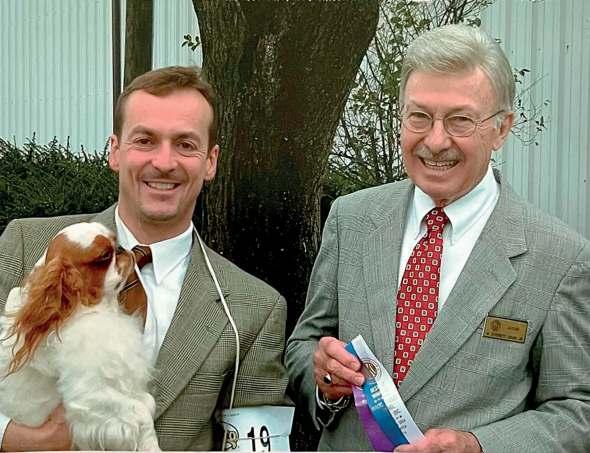
BEST IN SHOW MAGAZINE 139
I am busy judging these days, so I do not plan to raise puppies anymore. I must say that my own efforts were greatly enhanced in 2000, when I received Ch. Cwmhaf Bel Canto from Rita and the late Jeff Lloyd of Wales. Shewe called her Nonnie. She was the dam of two litters and three champions for me. Her pedigree was all Maibee, the successful line of the late Shealagh Waters. Some of Nonnie’s nice pups and others I bred over the years did not get shown, I’m sorry to admit.
What breed hallmarks and key characteristics do you aspire to produce in each new generation of puppies?
My intention was always to breed pretty, pouting, dark-eyed, compact, sound, diminutive, flat-faced spaniels with round top-skulls and level backs. Easier said than done, of course.
How have English Toy Spaniels changed since you first started showing and breeding? This can be in quality and or presentation.
There has been a trend towards a bigger dog, often far above the 8 to 14 lbs. specified in the AKC standard, but overall, the dogs we see in the ring today are better. I think soundness and temperaments have improved. Dog shows are not isolated events as they were in the past, and I think exhibitors try to groom better and present better, knowing that any show ring can be recorded and instantly shared with an international audience.
What are some of your proudest achievements to date in the world of English Toy Spaniels?
I have had many, through the years, including WestminsterKennelClub,AKCNationalChampionship Show, National Owner Handler Series Bests in Shows, and Group wins. Looking back, the Best Puppy, Best Bred-by-Exhibitor, Best Stud Dog and Best Veteran Dog wins at English Toy Spaniel Club of America National Specialty shows were meaningful and against competition. These were won with different dogs, now that I think of it.
Please name three English Toy Spaniels that you wished you had owned or bred. These can be any dogs in any point of history.

BEST IN SHOW MAGAZINE 140 MEET THE BREED · ENGLISH TOY SPANIEL
I have loved so many gorgeous dogs in historic photographs! It’s hard to choose only three. Going way back to the late 1920s, Mrs. Raymond-Mallock’s tri-color Champion Ashtonmore Barritone; Mr. and Mrs. Holme’s black and tan Champion Noranette (between World War I and World War II); and either of two Blenheims of Miss Vincent’s from the 1950s, ChampionPierreAgainofVihurst,orPeterofVihurst.
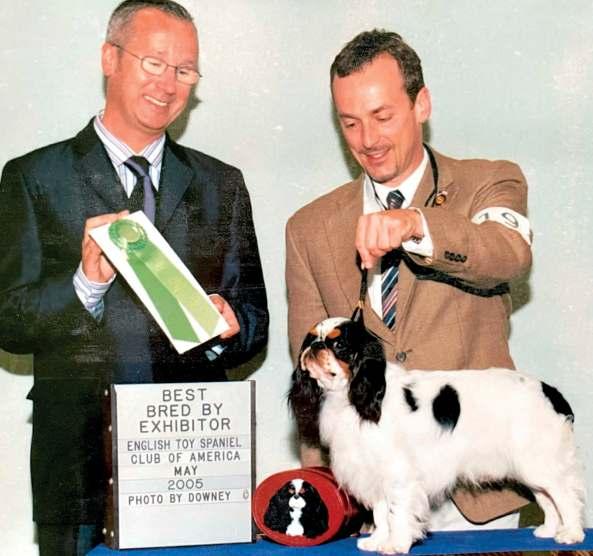
How would you describe a correct head for an English Toy Spaniel?
Of course, it is a head breed, but it is also a face breed. A correct head with correct expression is placid, intelligent, and captivating. The head, with the face should be round and appear rounded and full in all portions and perfectly balanced with a plush, cushioned look and with a visible underjaw or chin. Very dark, rather large round eyes which must not bulge or have white edges showing. The nose must be correctly placed in line with the eyes with correct lay-back or set-back with the shortest possible stop. The nose must not be low-set or protruding, nor so deeply set back as to be buried under a wrinkle. The muzzle is broad and should not have sagging cheeks or appear narrow. All is softly blended. The skull is round and reasonably high when viewed from all sides, but never bulbous. Low set, hanging ears with profuse, long hair should ideally frame this pretty, pouting face.
What do you wish all judges knew about the English Toy Spaniel before judging them?
The breed is typically not an overt showman and must never be required to run fast. Reward a calm demeanor and soft expression with a coordinated,
easy movement with good reach and drive but never running.
Do you judge? Please could you share some special judging appointments with our readers.
Yes, I judge the Toy Group, some Sporting breeds, and some Non-Sporting breeds. I consider it an honor to have been member-elected to judge the English Toy Spaniel Club of America National Specialty in May 2019. Another highlight will be judging the breed for the United Kingdom Toy Dog Society in March 2024. Is there a country where you believe the breed is particularly strong now?
There are too many variables with breeding this breed, no matter where anyone lives. There are quality dogs here and there, with no consistent, dominating producers.
MEET THE BREED · ENGLISH TOY SPANIEL
In the USA, the breed is divided into two Varieties by color, King Charles, and Ruby (KC and R) and Blenheim and Prince Charles (B and PC). Would you rather they are treated as one breed like in the UK or do you prefer the divide in color when showing?
I think it is perfectly logical to separate the breed into broken and solid color varieties. Color and markings are an important distinction and should have fair consideration for conformation titles. Ask wholecolor Cavalier King Charles Spaniel exhibitors if it’s hard to win against Blenheim’s and tricolors!
There are four recognized colors for English Toy Spaniels, namely Blenheim, Ruby, Black and Tan (King Charles in the USA) and Tricolor (Prince Charles
in the USA). Is there a difference in quality between the colors, do you find it’s more difficult to produce a quality King Charles Spaniel in one color over another?
The gene pool for whole colors is smaller than for broken colors and seems to be getting smaller. I believe this presents a challenge for breeders of whole colors. A quality whole-color specimen is a special achievement!
What are your future goals/wishes in the sport of pedigree dogs and the World of English Toy Spaniels?
My desire is for the breed to endure and prosper, unchanged by irrational outsiders. My wish is to encourage breeders and exhibitors and to recognize their best efforts whenever possible.

BEST IN SHOW MAGAZINE 142
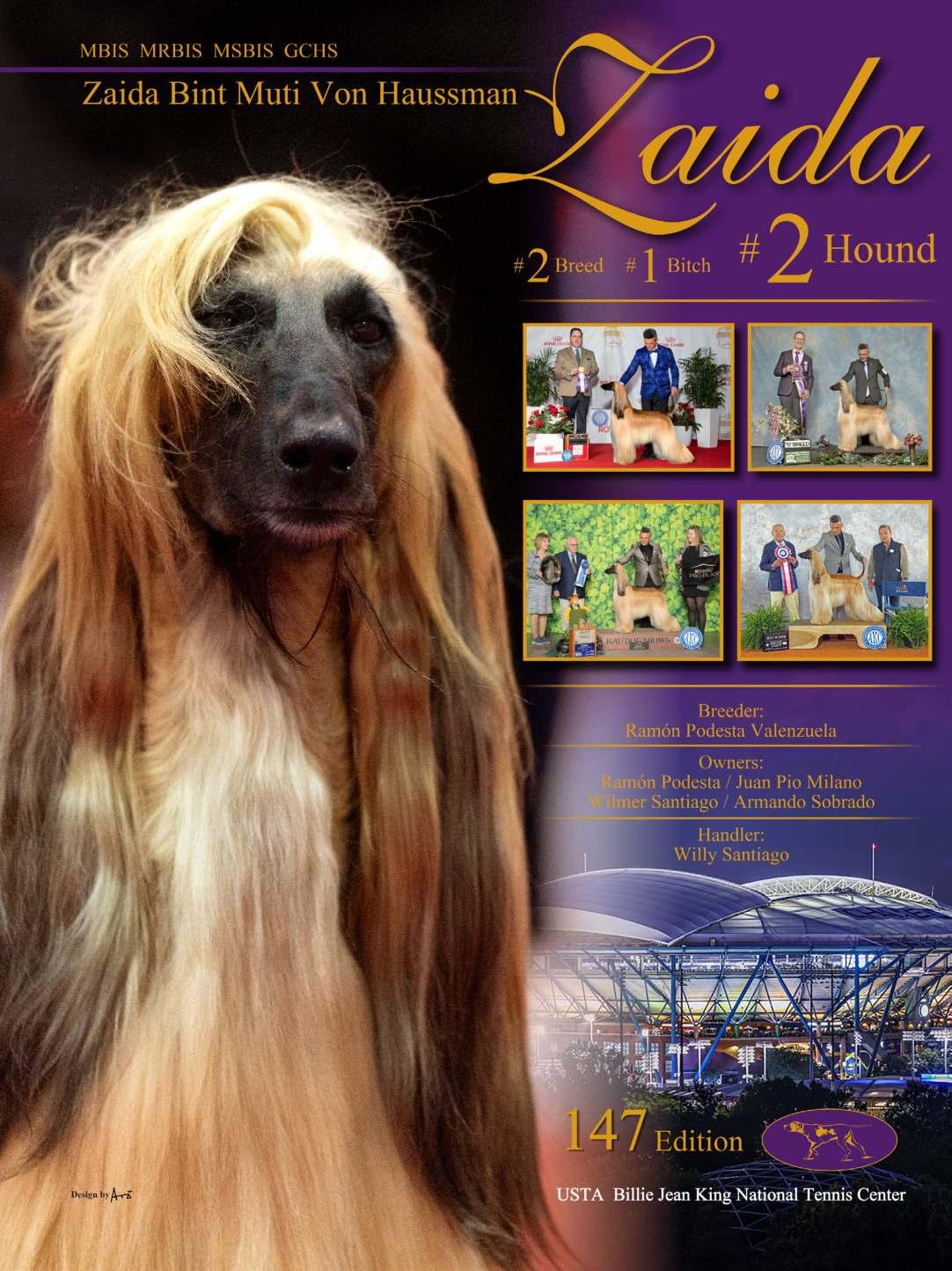
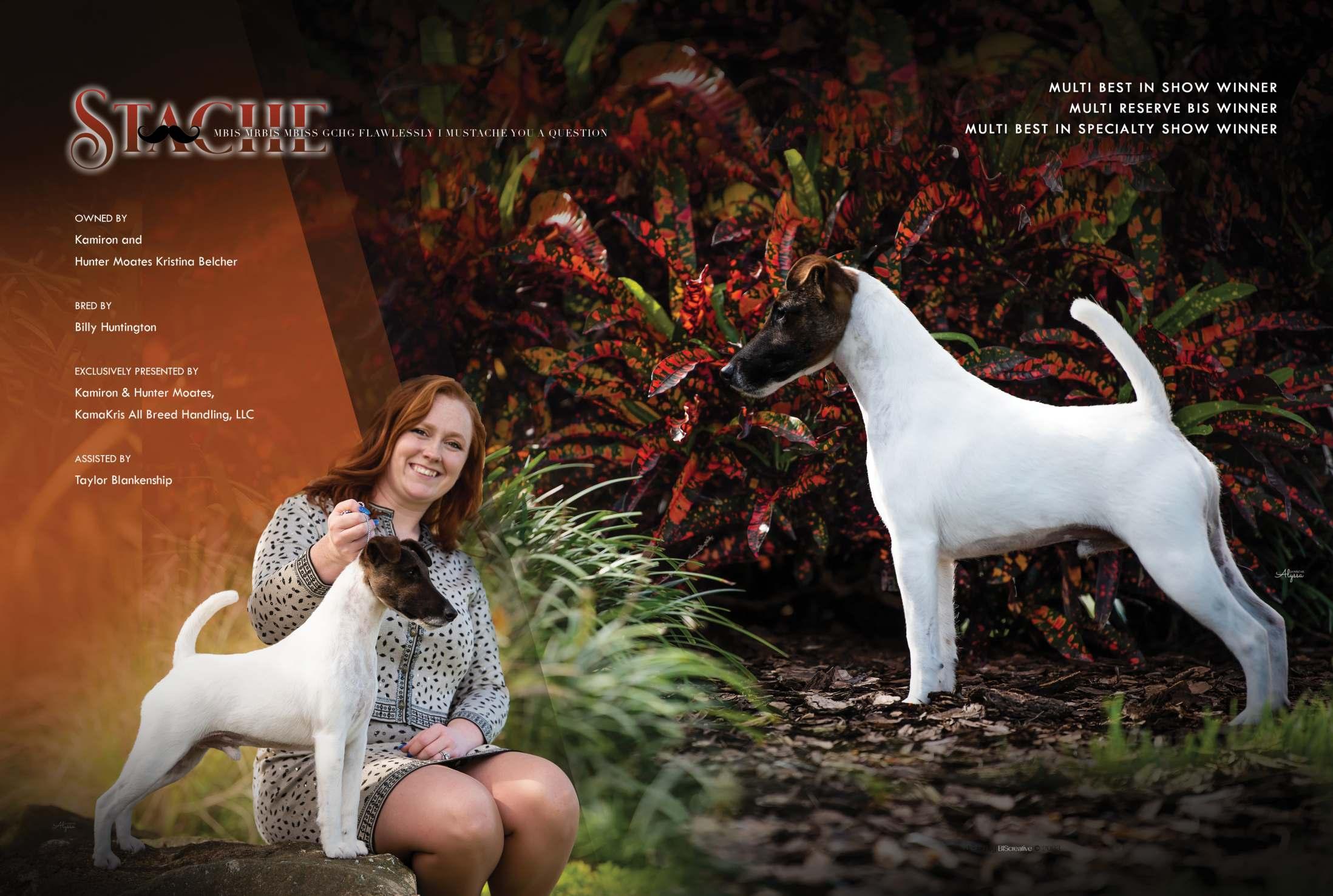

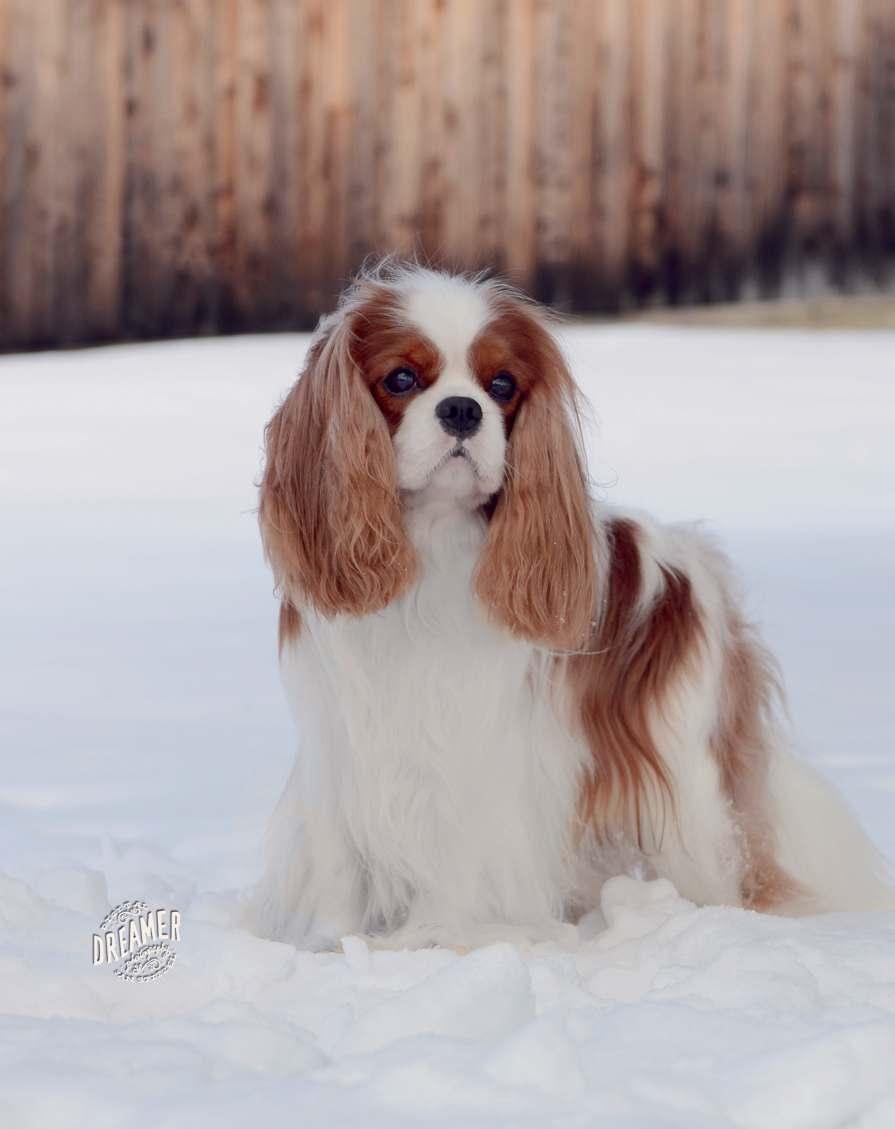
BEST IN SHOW MAGAZINE 146
MEET THE BREED CAVALIER KING
CHARLES SPANIEL ERICA & RACHEL VENIER ORCHARD HILL
Cavalier King Charles Spaniel
Could you please tell our readers how you became involved in the world of pedigree dogs, the Cavalier King Charles Spaniel, and dog showing/breeding?
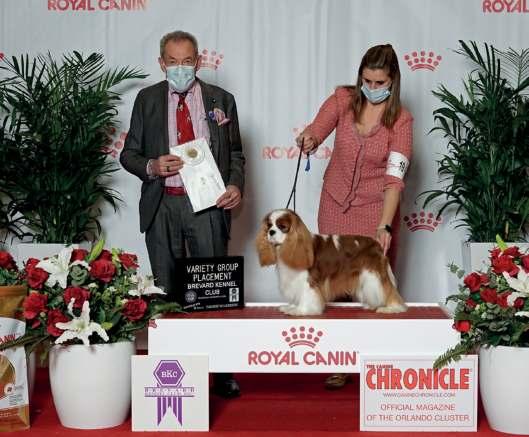
(Please mention your kennel name, its meaning, and any other breeds you are involved with.)
Erica Venier: “Orchard Hill” is situated on a southernfacing hill on the outskirts of Reading, Pennsylvania. It was once a functioning apple orchard, and for the past 45 years, we have been fortunate to use the tenacre property as a home base for our dog and horse activities.
I grew up in Philadelphia, Pennsylvania, USA, with working artist parents who always encouraged me to view things critically and with a sharp eye. Their
artistic sensibility had a strong impact on me. As a child, my mother introduced me to the world of purebred dogs through a well-worn copy of “The New Book of the Dog” (published in 1908). Long before I could read, I spent hours admiring the many photos and paintings that illustrated the book, determined to have a houseful of purebred dogs of my own someday.
Rachel Venier: Throughout the 1970s and 80s, Mom bred and showed Shetland Sheepdogs under the Wits’ End prefix. Even as a toddler, I was drawn to the dogs. Growing up, my mom taught me the fundamentals of type,structure,andmovement.WatchingtheShelties play in a field, my mom would candidly evaluate each dog for me. If two dogs were strong in a certain area, she showed me which was a tick better. She even evaluated our barn cats’ conformation. The lessons have stayed with me throughout my life. I focused on showing horses in my childhood but returned to dogs in my final year of college.
BEST IN SHOW MAGAZINE 147
Cavalier King Charles Spaniels and Norfolk Terriers entered our lives in 1996. We have finished over 130 AKC champions in Cavaliers and over 50 CKCSC, USA champions, including four ACKCSC National Specialty Best of Breed winners, and multiple best-in-show, specialty, and group-winning dogs. We both judge CavaliersintheAKC,CKCSC,USA,andinternationally.
Our Norfolk numbers are more limited, but the breed is dear to me. Most recently, Leonardo Garcini campaigned GCHB Orchard Hill I Can Explain for us. In just a few months, he won seven groups, a terrier specialty, a reserve best in show, and best of breed at the AKC National Championship.

Where did you obtain your foundation Cavaliers?
Erica: Our foundation bitch was acquired from the
late Joy Sims of Bramble Cavaliers, UK and US. Having spent years breeding Shelties and attending seminars and specialties, I was fully aware that I did not yet understand Cavalier breed type, but I was confident that my experience in another breed and as an art student would assist me in selecting the best-made puppy that also appealed to me aesthetically. That single puppy bitch, chosen at ten weeks, became Toy Group winner USA/AKC Ch. Bramble Royal Heritage at Orchard Hill, ROM, LOM. “Darla” is behind every Cavalier we currently own, as well as many successful Cavaliers bred by others around the world.
I owe credit to my artist parents for their early influence on my development of visual-spatial relationships. As an introspective, self-critical, independent person, I have opted to educate myself by carefully listening to successful breeders while working closely with my daughter, Rachel. As breeders, we have both been drawn to artistic individuals who are also practical and honest. Darla, our foundation bitch, gave birth to three daughters who are the basis of our current breeding program. Her daughters, the litter sisters USA/AKC Ch. Orchard Hill Party Shoes, ROM, LOM, USA/AKC Ch. Orchard Hill Where’s the Party?, and Ch. Orchard Hill Surprise Party, ROM, LOM, have produced a slew of specialty winners, including three National Specialty Best of Breed winners and an all-breed Best in Show winner. Line breeding on “The Party Girls” has been highly successful and remains the foundation of our present breeding program.
What breed hallmarks do you aim to produce in each new generation of Cavalier puppies?
BEST IN SHOW MAGAZINE 148 MEET THE BREED · CAVALIER KING CHARLES SPANIEL
Rachel: When considering a breeding, we first assess the bitch’s health and soundness of temperament. If she possesses both, then we evaluate the virtues she can contribute to our program.
Our breeding program has an artistic vision and an ideal Cavalier in mind: a structurally sound, onepiece dog of quintessential Cavalier type. Head type, breed character, and make and shape are of utmost importance to us. A Cavalier should be an “elegant,” “royal”-looking toy dog that is also a small sporting spaniel. The key term in Cavaliers is “moderation”: glamour without exaggeration or sculpting, sporting and athletic without raciness or coarseness. We continuously strive to produce a dog with both the foundationandthefrosting.Adogwiththesubstance, bone, and structure to recall their working spaniel forebears, as well as the quintessential gentle, limpid Cavalier expression that elevates your mood every time you look at it.

To achieve the Cavalier expression, we prioritize large, round, dark, frontally placed eyes with slight cushioning underneath. After that, we seek an “open” expression that originates from moderate stop, width between the frontally placed eyes, slightly curved topskull that appears flat because of high-set ears, and balance between the backskull and foreskull. In our breeding program, we view USA/AKC Ch. Orchard Hill Charge it to Dad, JW, and USA/AKC GCH. Orchard Hill Plum Pretty, ROM, as benchmarks for head type.
We also prioritize the Cavalier’s sporting-spaniel silhouette and movement. That silhouette comes from breed-specific proportion, so when assessing the dog overall, we take into account the proportions in the breed standard, such as height-to-length, angulation, and other similar breed touchpoints. Since we want Cavaliers to recall their working spaniel forebears, we strive for soundness in our dogs. Maintaining soundness in a toy dog breeding
MEET THE BREED · CAVALIER KING CHARLES SPANIEL
program is challenging, particularly when focusing on head type.
How have Cavaliers changed since you began showing/ breeding? This can be in quality and/or presentation.
Rachel: We believe that Cavaliers in the United States have improved overall in type and depth of quality. Thirty years ago, there was a wide range of sizes and shapes in the ring. Currently, many Cavaliers in the U.S. exhibit good breed type, particularly strong head
type, and type is often seen throughout the classes at specialties. We believe that the U.S. is well-positioned to continue improving breed type and consistency overall because we now have a pool of high-quality breeding stock to draw from.
What are some of your proudest accomplishments to date in the world of Cavalier King Charles Spaniels?
Rachel: After many years of being involved in the breed, we reflect on the lifetime of work overall. It is particularly moving to see our dogs contribute to other breeders’ success worldwide. We believe in mentoring and paying it forward. We compete in the ring, but ultimately, we are all preservation breeders working together to help the breed thrive. It is always gratifying to see other breeders have success with our stud dogs or with dogs that started in our breeding program.
Erica adds: The 2019 American Cavalier King Charles Spaniel Club National Specialty was a lifetime achievementforus.ThelateRobertSchroll,Ravenrush Cavaliers, a renowned Cavalier breeder who played a pivotal role in establishing the Cavalier breed in the United States, judged the National. We studied his dogs when we were starting in Cavaliers. Our own home-bred Orchard Hill dogs won Best of Breed, Best of Opposite Sex, and two Awards of Merit, all handled by different handlers. The dogs we showed that day all descended at least six generations from our foundation bitch. Additionally, the litter brother to Best of Opposite, CH. Orchard Hill Elementary, owned by Karin Ostmann, sired the Select Bitch, Winners Bitch, Reserve Winners Bitch, and Best Puppy in Show, all bred by others. It is thrilling to have bred

BEST IN SHOW MAGAZINE 150
MEET THE BREED · CAVALIER KING CHARLES SPANIEL
a National winner, but it is equally gratifying to see our dogs excel for others. It was heartening to watch Mr. Schroll carefully sift through over three hundred entries and select our close family members. He was judging breeding stock.
The American Cavalier King Charles Spaniel Club recognizes dogs and bitches that have been top producers: to earn a Register of Merit, a dog must produce at least ten Champions of Record, and a bitch must produce five. A Legion of Merit is a “producer of producers” award. It is earned when a dog produces three progeny with ROMs, and a bitch produces two. To date, our dogs have earned 17 Registers of Merit and seven Legions of Merit, which we believe is the most LOMs of any breeder. We recognize and credit other breeders’ outstanding dogs that have contributed to ours. The breed benefits when we work together.
Please name three Cavalier King Charles Spaniel’s that you wished you had owned/bred. These can be any dogs in any point of history.
Erica and Rachel: When we started in Cavaliers, we cemented two dogs in our minds: Telvara Karbon Kopy, bred and owned by breed icon Veronica Hull, and Alberto of Kindrum. Karbon Kopy set the standard for head type and Alberto was the standardbearer for moderate type and shape.

Multiple BIS/BISS USA/AKC Ch. Pinecrest Orchard Hill Rock The Boat, ROM was sired by our dog, USA/ AKC Ch. Sheeba Special Inspiration at Orchard Hill, and we bought “Rocky” as a ten-week-old puppy from

BEST IN SHOW MAGAZINE 151
MEET THE BREED · CAVALIER KING CHARLES SPANIEL
breeder Ted Eubank of the renown Pinecrest kennel. Rocky was the epitome of breed type in a seventeenpound package: fluid movement, outstanding temperament, and melting expression. We were honored to have owned him, but naturally we both wished we had been his breeders.
What do you wish all judges knew about the Cavalier King Charles Spaniel before judging them?

Erica: Non-breeder judges are sometimes hesitant to put up a smaller male Cavalier, possibly influenced by the common stereotype that dogs should be bigger than bitches. Cavalier standards internationally do not differentiate size between males and females. A small male with ample bone and substance can be a valuable asset to a breeding program if he possesses outstanding breed type and is well made. Experienced breeders know that it is extremely difficult to create a smaller animal while maintaining correct proportion
of bone to size. Now let’s add in head qualities, coat, temperament and a myriad of other desired attributes and we may find ourselves inadvertently allowing the breed to increase in size over time. This must not happen. Cavaliers are Toy Dogs.
Photo: Sixteen pounds of fabulous: USA/AKC Ch. Sheeba Special Inspiration at Orchard Hill, ROM, LOM. “Shawn” was the sire of multiple BISS winner USA/AKC Ch. Orchard Hill Never Grow Up, ROM, LOM & multiple All Breed BIS & BISS winner USA/ AKC Ch. Pinecrest Orchard Hill Rock the Boat, ROM. Recognized internationally by prominent breeders, Shawn was not similarly recognized in the Group ring. Yet years after his death he remains an example of correct breed type.
Rachel: (1) “Moderate,” not “generic.” The watchword intheCavalierstandardismoderation,butamoderate dog can still be glamorous. To have Cavalier type, the dog needs to have large, round, dark, frontally placed eyes with slight cushioning beneath. A typey Cavalier is a piece of living art.
(2) People fall in love with Cavaliers for their eyes, but make Cavaliers part of their lives for the breed character. Cavaliers are guileless. They love life and everyone in it. A Cavalier should never display sharpness or excessive shyness in the ring.
In the USA, there are Club Champions and AKC Champions, do you prefer to show in one ring over the other, please give reasons for you answer.
Erica: I believe it’s imperative for breeders to expose themselves to dogs in areas outside of their own region. Specialties help us accomplish this goal
BEST IN SHOW MAGAZINE 152
MEET THE BREED · CAVALIER KING
CHARLES SPANIEL
regardless of where or by whom they are held. By exposing oneself to a variety of dogs from multiple regions a breeder can develop a world view and hopefully maintain a fresh, unbiased eye.
Rachel: We’ve always shown in both AKC and CKCSC, USA venues. To develop breed expertise and maintain your eye, you need to see numerous outstanding breedrepresentatives,youneedtoseeotherbreeders’ quality dogs, and you need to see dogs outside your region. There is no better continuing education than attending specialties. Specialty shows—whether AKC or CKCSC—serve to constantly sharpen your eye for the breed. U.S. Cavalier breeders are lucky to have many specialties where we can constantly hone our craft.
In The USA, King Charles Spaniel are divided into two varieties by color. King Charles & Ruby (KC & R) and Blenheim & Prince Charles (B & PC). Would you like to see Cavaliers divided by color like this?

Erica: Definitely not. Whole colors in the United States have improved dramatically by inter breeding with parti colors. Yes, temporary set backs may occur with mismarks. But over time the breed benefits by allowing itself to ignore color and concentrate on structure, balance and over all correct breed type.
Rachel: There is one standard for all four colors, and competing together helps breeders build some generalconsensusofwhatthebreedshouldbe.Robust competition is healthy for the breed. When judging dogs, I try to see them in monochrome, choosing what I believe is the best breed representative regardless of color.
BEST IN SHOW MAGAZINE 153
MEET
THE BREED · CAVALIER KING CHARLES SPANIEL
There are 4 recognised color’s for Cavaliers, namely Blenheim, Ruby, Black & Tan and Tricolor. Is there a difference in quality between the colors, do you find it’s more difficult to produce a quality Cavalier in one particular color over another?

Erica and Rachel: In the United States, we think the depth of quality of whole colors has improved considerably since the 1990’s. Whether you’re breeding wholecolors or particolors, the Cavalier standard requires specific color and markings, and any time a standard has such requirements, it adds a layer of difficulty on top of the fundamental challenge of producing a typey, sound dog. There are issues with placement of markings, clarity between markings, coat quality and texture, and density of pigment. In Cavaliers, where head type is essential, the tri and black-and-tan facial markings must be placed so as to give the dog a soft expression. And it can take generations of work to improve a specific aspect of type or soundness in a specific color dog.
All that said, when we judge them, we look at the fundamental dog under the markings first.
What are your future goals/wishes in the sport of pedigree dogs and the World of Cavalier King Charles Spaniels?
Rachel: In Cavaliers, we’d like to maintain the strength of our program. It’s a constant challenge. We also want to contribute to the future of the breed overall by mentoring and collaborating with others. I would like to continue judging and learning additional breeds. I also want to continuing developing our Norfolks. They are a delightful breed and I wish we saw more of them at the shows.
My overall wish for the sport of pedigree dogs is that we grow our numbers and continue working to make the sport more widely accessible and understandable. We can’t imagine our lives without purebred dogs and hope more people can find the sport.
MEET THE BREED · CAVALIER KING CHARLES SPANIEL




BEST IN SHOW MAGAZINE 158
MEET THE BREED
CAVALIER KING
CHARLES SPANIEL KEVIN CLINE
FORESTCREEK
Cavalier King Charles Spaniel
Please tell our readers how you got involved with the world of pedigree dogs, the Cavalier King Charles Spaniel, and dog showing/breeding.
I have been involved with purebred dogs for practically my entire life. My parents had boxers which they showed, and I fell in love with the breed as I grew up and still admire them today. Unfortunately, during my college, medical school, and residency (14 years total), I did not have the time or resources to actively participate in the dog show world but always felt that I would return to that hobby one day.
I met my wife in medical school, and we had two amazing daughters, Rachel and Emily. It was my wife who ultimately decided that a Cavalier King Charles Spaniel would be the right breed for us as she
wanted a smaller dog that would be a great family companion. Once she chose the breed, I set out to find a well-bred Cavalier that I could show. Eventually, our first Cavalier became a champion, and I knew I was hooked.
Though she was a great dog, I had learned by that time that I wanted to move forward with Cavaliers in a different direction. I was fortunate to meet two incredibly talented breeders, Mark Sedgwick and Michael Levy of Pascavale Cavaliers. With their mentorship, I have had access to what I feel are some of the best Cavaliers in the world. Through them, I have been able to establish a line of beautiful and healthy Cavaliers of which I am very proud.
I have had a lot of help along the way. My family has participated in the sport, including my daughters as junior handlers, and my sister Cheryl. More recently, I am proud to welcome Joshua Marshall to the ForestCreek team. Many have inquired about my kennel name, ForestCreek. It was chosen as it is the name of the private drive on which my house is built.
Currently, I am solely focused on breeding and showing Cavalier King Charles Spaniels, but I have a great interest in other breeds such as Boxers, English Cocker Spaniels, and Clumber Spaniels. I believe that every breed has unique and wonderful qualities, and I am constantly learning from my involvement with them.
What breed hallmarks do you aspire to produce in each new generation of Cavalier puppies?
Cavaliers are bred to be companion dogs. Anyone who has owned a Cavalier knows that this is their
BEST IN SHOW MAGAZINE 159
sole purpose in life. They want nothing more than to love and be loved. Temperament is therefore tantamount, in my opinion, when striving to produce great Cavaliers. From there, of course, soundness and health are also very important. The final touch is beauty and elegance. When all of these traits come together, the result is a truly amazing Cavalier.
How have Cavaliers changed since you first started showing/breeding?
This can be in quality and/or presentation. I have been involved in Cavaliers for approximately twenty years. The Cavalier King Charles Spaniel is a newer breed, especially when compared to breeds that have been around for centuries. As such, many of their traits are not as firmly established. Because of this, I feel you see more variation in overall type when comparing Cavaliers to other breeds. The longer type
is seated, the harder it is to change. Conversely, in a relatively newer breed such as the Cavalier, we can realize type change more quickly.
In my opinion, I feel that in a relatively short time, we have seen vast improvements in structure, including front and rear construction. Head type continues to evolve, and we are seeing many more beautiful and elegant Cavaliers in the ring. Additionally, and perhaps most importantly, breeders are working very hard to not only breed beautiful and sound Cavaliers but also healthy ones.
What are some of your proudest achievements to date in the world of Cavalier King Charles Spaniels?
I feel very fortunate to have been able to start with top Cavaliers. I give credit to all the breeders, and there are many, that have contributed in a positive way to this breed, including the ancestry of my lines. I am proud to have 79 AKC Champions and 47 CKCSC, USA Champions. Additionally, three of my Cavaliers have finished their UK Championship. I have bred a Westminster Best of Breed, and I have bred and/or owned three CKCSC, USA National Champions and a Best of Breed at Crufts. Additionally, dogs that I have owned or bred have produced numerous national and international champions.
What do you wish all judges knew about the Cavalier King Charles Spaniel before judging them?
Each judge brings a different knowledge base to the ring. Some judges bring the experience of working with a specific breed, such as the Cavalier. Other judges bring with them the experience of judging many breeds, including an in-depth knowledge of

BEST IN SHOW MAGAZINE 160
MEET THE BREED · CAVALIER KING CHARLES SPANIEL
dog structure and movement. Both contribute in different, yet positive, ways to our appreciation of the sport.
Do you judge? Please could you share some special judging appointments with our readers.
I was approved to judge Cavaliers in the AKC in 2017 and in the CKCSC, USA in 2019. While serving on the Board and as President of the CKCSC, I temporarily inactivated my AKC license but plan to reinstate as soonasmytermaspresidentiscompleteinOctoberof this year. I have enjoyed judging Cavaliers in England and at CKCSC specialty shows. I am looking forward to another assignment in England in December of this year.
Is there a country where you believe the breed is particularly strong at the moment?
Unfortunately, with our travel restrictions over the past several years, I have not had the opportunity to travel to other countries to see dogs in other countries lately.
In the USA, there are Club Champions and AKC Champions, do you prefer to show in one ring over the other, please give reasons for your answer.
Yes, there are two venues in the United States in which Cavaliers can be shown, The CKCSC, USA and the AKC. The Cavalier King Charles Spaniel Club, the “Club” was started in 1956 as the original breed registry in the USA. Cavaliers have been showing in this venue since that time. The AKC accepted the Cavalier breed in 1996. Many exhibitors, including myself, show in both venues, and others choose only to show in one or the other.
In the Club, all dogs compete to earn winners and reserve. To become a Club Champion, current champions must be defeated. Club shows are typically specialty type shows with larger entries. In the AKC, non-champions compete with only nonchampions to earn their championship title. There are hundreds of AKC shows across the United States every month. Some of these shows can be very small, and others very large. Many of these are judged by all breed judges. Occasionally, there are larger specialty shows judged by breeder judges. Both venues are challenging, each with strong points. I enjoy showing in each.
In The USA, King Charles Spaniel are divided into two varieties by color. King Charles & Ruby (KC & R) and Blenheim only non-champions. Would you like to see Cavaliers divided by color like this?
Absolutely not. Cavaliers come in four recognized colors. To become a champion, you must compete

BEST IN SHOW MAGAZINE 161
MEET THE BREED · CAVALIER KING CHARLES SPANIEL
against the best. As these four colors are judged on the same standards, I feel that quality should never be compromised because of color or markings.
There are 4 recognized colors for Cavaliers, namely Blenheim, Ruby, Black & Tan and Tricolor. Is there a difference in quality between the colors, do you find it’s more difficult to produce a quality Cavalier in one particular color over another?

AsaJudge,Ihaveawardedallfourcolors. Idofeelthat there is more depth in quality with the blenheims, but perhaps that is because there are proportionally more of them showing. I do feel it is harder to breed
the same quality in some colors, particularly the tricolors.
What are your future goals/wishes in the sport of pedigree dogs and the World of Cavalier King Charles Spaniels?
Though I particularly enjoy breeding and exhibiting, I am looking forward to expanding my horizon in the realm of Judging. I am excited to be judging in the UK later this year and have plans to aquire more toy breeds and eventually the toy group. I feel safe saying that pure breed dogs will always be an important part of my life.
BEST IN SHOW MAGAZINE 162
MEET THE BREED · CAVALIER KING CHARLES SPANIEL




BEST IN SHOW MAGAZINE 166
MEET THE BREED CAVALIER KING
CHARLES SPANIEL
MICHELLE CHAPMAN & TANYA IRELAND
ELLEMICH
Cavalier King Charles Spaniel
Please tell our readers how you got involved in the world of pedigreed dogs, the King Charles Spaniel, dog showing and breeding.
Michelle-- Tanya and I had very different starts in the world of show dogs. My show world started when my mum bought our first Weimaraner and we decided we were going to show her. I started off handling her occasionally, then ended up being her main handler. I won my first CC with her. This was also the first CC won by a long haired Weimaraner bitch in the UK. I also started as a junior with Irish Red and White Setters. I showed these for my mum but also handled for Wing Commander Isles of the Glenessa affix. I showed all our dogs then under my joint affix with my mum Galrhia, which was a combination of my
maiden’s name Gallagher and Rhia my first pet. When I started my journey in Cavaliers, I wanted to do it on my own and the Ellemich affix was born. It is just an anagram of Michelle.
My start with Cavaliers is completely different and began with dog training while watching Veronica Hull of the Telvara affix train one beautiful puppy after another. I asked my mother if I could have one and being told no, only when you leave home. I have also finished homebred Miniature Long Haired Dachshund champions alongside my mum.
Tanya-- I was born into the world of Cavaliers, and later King Charles Spaniels. Out of five girls, I was the only one who went into showing. Mainly Cavaliers, but I was also lucky enough to handle Griffons for Ann Fenn of the famous Starbeck kennel. At the age of 19 I went to work with the Maibee kennel, handling many Cavaliers and King Charles to top awards. Some of these awards included winning the Toy Group at Crufts in 2013. Ten years ago, Michelle and I went into partnership, and we have never looked back. We work well together and can bounce ideas off each other about our dogs and any future breedings. It’s a partnership where we hope to continue breeding and showing beautiful dogs for many more years to come.
What are the main differences and similarities living with and breeding Cavalier’s and King Charles Spaniels?
This is quite simple; similarities are color only. Looks wise, the obvious difference is the Cavaliers have a flat skull and well-set ears and King Charles have a domed skull with low set ears. There are many more differences, but the biggest is temperament. Cavaliers
BEST IN SHOW MAGAZINE 167
love life, they are fearless and outgoing. They love everyone they meet. The King Charles is reserved and aloof, they take time to get to know you.
Where did you get your foundation Cavalier and King Charles Spaniels and what breeders do you work with today?

My foundation Cavalier came from the lovely Peter and Ruta Towse (Miletree), although she was bred by Andy Vella and Tracy Parsons Cox. She was called Cinderlace Aimee, and she was my baby. We pretty much work on our own breeding programs but have been lucky enough to exchange some beautiful lines with other Cavalier breeders like Tanja Schumann from Germany and Michael Hegarty in Ireland.
We also have a wonderful working relationship with Patty Kanan and Cindy Huggins in America. They have campaigned a few dogs for us to top honors, and alongside Karin Ostmann enabled us to achieve our goal of breeding Ch. Ellemich American Express.

Our first King Charles wasn’t mine; she was my son Zachs and if I dare claimed any of her, he would not be happy. She was his world; she was bred by Carol and Ian Siddle (Penemma).
What breed hallmarks and key characteristics do you aspire to produce in each new generation of puppies?
Well for me it must be the nature of the Cavalier, the way they would climb into your skin if they could. The way they melt me with their eyes. They have a gentle but fun nature. Just waking up to them each morning makes every day ok.
Tanya-- I agree with Michelle, if you don’t have
BEST IN SHOW MAGAZINE 168
MEET THE BREED · CAVALIER KING CHARLES SPANIEL
the eyes, you don’t have a Cavalier! The same goes for temperament, we want our dogs to be happy, confident, fit, and healthy. I think this shows in the ring.
How have the Cavalier and King Charles Spaniel changed since you first started showing and breeding? This can be in quality and or presentation.
I first started watching the Cavaliers as a child and their numbers were huge, and in turn there was an excess amount of quality. Now, we are so much smaller in numbers, but the quality is still there, just less of it. Presentation is something I think could be better. Some of that is down to learning and effort. It’s something Tanya and I both take very seriously as it’s a beauty contest. To keep dogs in great condition and allow them to have a life is hard work but we strive to give them the best of both.
What are some of your proudest achievements to date in the world of Cavalier and King Charles Spaniels?
From a baby, Ellemich Aurora winning the CKCS puppy of the year under breed specialist Jon Evans (Alansmere), beating the beautiful Ch. Maibee Make Believe. Ch. Ellemich Aurora winning the Blenheim Palace Super Match under breed specialist Alicia Pennington (Tudorhurst) beating the King Charles Spaniel Ch. Maibee Theo. Also winning the bitch CC at Crufts under breed specialist Lorraine Gillhespy (Lorphil) with the very young Ch. Ellemich I’m a Celebrity JW. Ch. Ellemich Poeme won an all-breed championship show best puppy in show at the Bath championship show. One of the very few to ever do so.
Another proud moment would be when Gwen Wells and Lisa campaigned GCH Ellemich The Huntsman to winning the breed at Westminster.
The newest and probably the greatest achievement to date would be Ch. Ellemich American Express becoming the UK breed record holder for the most ever best puppy at championship shows titles, the UK breed record holder for the youngest ever Cavalier champion at one year and three days old. Then, blowing us all away by winning the dog CC and Best of Breed at Crufts 2023 under breed specialist Mrs Veronica Hull (Telvara) and Toy Group 1 under another breed specialist Dr. Annuka Palaheimo Segersven. I am not sure that this can ever be topped for me. Tanya and I still can’t take it in, we are so very proud of Dublin.

BEST IN SHOW MAGAZINE 169
MEET THE BREED · CAVALIER KING
CHARLES SPANIEL
Please name three Cavalier and three King Charles Spaniels that you wished you had owned and bred. These can be any dogs in any point of history.
Michelle— Ch. Telvara Carbon Copy. Any of the Telavara dogs as they are what made me want Cavaliers. Ch. Aranel Cosmic and Ch. Leogem Rhapsody.
All for very different reasons but all for me are the epitome of the breed.
Tanya— The Cavaliers are Ch. Maibee A Cameo, Ch. Lymrey Royal Scandal at Ricksbury and Ch. Aranel Genesis.
The King Charles are Ch. Maibee Theo, Ch. Tudorhurst Theron, and Ch. Tewhit Titania.
What do you wish all judges knew about the Cavalier and King Charles Spaniel before judging them?

That conformation is obviously important in any breed, but in a Cavalier without breed type you just have any other spaniel. I want to drown in the eyes of a Cavalier. They are large dark and round. I want to smile when I look at their faces.
Do you both judge? Please could you share some special judging assignments with our readers?
Michelle-- We both judge and have been blessed to have judged in a lot of countries. So that’s hard to answer. Each country is so different, and the dogs are different. But, judging the Leeds Championship Dog Show for me was amazing, with a mum and dad from Leeds it felt a huge honor.
BEST IN SHOW MAGAZINE 170
MEET THE BREED · CAVALIER KING CHARLES SPANIEL
Tanya-- I think for me judging the sweeps at Eukanuba wasamazing!Wegottowatchthetophandlerspreparing and showing their dogs at the highest level. We both believe presentation is hugely important, we soaked everything up like a sponge. (Tanya)
Is there a country where you believe the breeds are particularly strong now?
This one must go to America. After flying out to watch theirnationalspecialty,wewerebothblownawaybythe huge amounts of quality. One after the next the quality just kept coming into the ring, and presentation was the next level.
In the USA, the King Charles is divided into two varieties by color, King Charles and ruby, and Blenheim and Prince Charles. Would you like to see this introduced in the UK for both Cavaliers and King Charles?
No, they are not strong enough in numbers or quality to cope with that.
Is there a difference in quality between the colors, or do you find it’s more difficult to produce a quality Cavalier or King Charles Spaniel in one color over another?
That is a hard question as we have predominantly bred Blenheim. So, watch this space and maybe we can let you know.
Whatareyourfuturegoals/wishesinthesportofpedigreed dogs and the world of Cavalier and King Charles Spaniels?
We would like to continue to produce a type that we are thrilled to look at. To make sure our dogs are always happy, and it shows in how they behave inside and outside of the show ring. To win and continue breeding and showing beautiful and healthy dogs.

BEST IN SHOW MAGAZINE 171
MEET THE BREED · CAVALIER KING CHARLES SPANIEL

BEST IN SHOW MAGAZINE 172
MEET THE BREED
CAVALIER KING
CHARLES SPANIEL
PAULA AYERS
BROOKHAVEN
Cavalier King Charles Spaniel
Please tell our readers how you got involved with the world of pedigreed dogs, the Cavalier King Charles Spaniel and dog showing and breeding.
My sister Brenda was dogless in 1994 after the loss of her beloved elderly Keeshond. She attended a local fun match and there, also watching in the stands, was a couple with two adorable dogs. After inquiring, Brenda and I discovered they were Cavalier King Charles Spaniels, and she knew she had found the dog for her! Paula became hooked as well when she joined in Brenda’s search for a breeder. In 1995, Brookhaven Cavaliers was born with the addition of Luxxar Joyride, a sweet tri-color female from Paula Campanozzi.Brookhaven was our third choice for our Kennel Name, and it was the neighborhood Brenda lived in.
Where did you get your foundation Cavalier’s and what breeders do you work with today?
I got my first Cavalier from Paula Campanozzi (Luxxar Cavaliers). Several years later I met Mark Sedgwick (Pascavale Cavaliers). Mark said, “You have structure, but you need type. Later that year I purchased CH Pascavale Ryan, followed by sharing many of Mark and Michale’s best boys including CH Pascavale Pancho, CH Pascavale Stanley, CH Pascale Jamie, CH Pascale Bruce, and CH Pascavale Smarty. We were so lucky to share a home with Pascavale Enchanted. This was a turning point in our breeding program, adding the beautiful type to our already sound Cavaliers.
What breed hallmarks do you aspire to produce in each new generation of Cavalier puppies?
I always aspire to produce puppies with type, soundness, and physical and mental health. It takes all three to do justice to the breed.
How have Cavalier is changed since you first started showing and breeding? This can be in quality and or presentation.
Cavaliers are sounder in structure than they were in 1985. I also feel in some cases the grooming and trimminghavegoneabitoverboard.Judges,breeders, and exhibitors need to remember they are a lap dog and a spaniel meant to be shown in a natural coat.
What are some of your proudest achievements to date in the world of Cavalier King Charles Spaniels?
When UK, AKC, CKCSC, USA CH Brookhaven Believe It Or Not, JW won RBIS at the UK Club Show and when he became a UK champion. Also, when AKC GCHP and
BEST IN SHOW MAGAZINE 173
CKCSC,USACHBrookhavenHereComesHogan,JWwon four all breed BIS titles. Ripley and Hogan both won the top twenty. They are two once in a lifetime Cavaliers.

Please name three Cavalier King Charles Spaniel’s that you wished you had owned or bred. These can be any dogs in any point of history.
CH Pascavale Enchanted (I owned him but would have lovedtohavebredhim),CHOrchardHillNeverGrowUp “Wendy” and CH Sheeba Special Edition “James.”
What do you wish all judges knew about the Cavalier
King Charles Spaniel before judging them? This breed should not only be beautiful with a head that will melt your heart, but they should be sound in movement. They are a lapdog and a spaniel. Do you judge? Please could you share some special judging appointments with our readers.
I do judge for the original registering club in the US (CKCSC, USA). Judging the CKCSC, USA National was a special appointment. It was held in Charleston, SC. Beautiful dogs in a beautiful venue.
BEST IN SHOW MAGAZINE 174
MEET THE BREED · CAVALIER KING CHARLES SPANIEL
Is there a country where you believe the breed is particularly strong now?
They are strong in the UK, but I hear from the judges in England they are just as strong in the USA.
In the USA, there are Club Champions and AKC Champions, do you prefer to show in one ring over the other, please give reasons for your answer.
I show in both venues and enjoy both.
In The USA, King Charles Spaniel are divided into two varieties by color. King Charles and Ruby (KC & R) and Blenheim and Prince Charles (B & PC). Would you like to see Cavaliers divided by color like this?

As a breeder of all four colors, I do think it would help the whole colors. Some judges cannot see past color.
There are four recognized colors for Cavaliers, namely Blenheim, Ruby, Black and Tan and Tricolor. Is there a difference in quality between the colors, and do you find it is more difficult to produce a quality Cavalier in one color over another?
No, all are Cavaliers. All my whole colors have a parti color in the first or second generation.
What are your future goals and wishes in the sport of pedigreed dogs and the world of Cavalier King Charles Spaniels?
I hope to continue to breed and show; healthy, pretty and sound Cavaliers. I would love to have world peace in the breed. It amazes me how many people want to cause issues instead of agreeing to disagree and move forward to show and breed healthy Cavaliers that are pretty and sound.

BEST IN SHOW MAGAZINE 175
MEET THE BREED · CAVALIER KING CHARLES SPANIEL
TRAVEL TIPS QUEENS

LocatedontheeasternendofNewYorkCity,Queens is the largest borough in terms of land area and the second-most populous, after Brooklyn. Home to over 2.3 million people, Queens is a bustling hub of culture, diversity, and opportunity. From its iconic landmarks to its vibrant neighborhoods, Queens is a must-visit destination for anyone exploring New York City.
In Queens, you could find the iconic Unisphere, a symbol of the 1964 World‘s Fair, standing tall in Flushing Meadows-Corona Park. The park itself was a treasure trove of attractions, from the New York Hall of Science to the Queens Zoo, where visitors could see exotic animals from all around the world.
Moving on to the neighborhoods, you could explore the vibrant and bustling Chinatown in Flushing, where the streets were lined with colorful shops and restaurants serving up delectable dim sum and noodles. Just a few miles away, you could experience the historic charm of Jackson Heights, with its beautiful pre-war architecture and rich cultural heritage. Here, you could find a plethora of ethnic food options, from Indian to Colombian to Nepalese, making it a foodie‘s paradise.
And who could forget about the iconic landmarks in Queens, such as the Silvercup Studios in Long Island City, where famous movies and TV shows were filmed? Or the Flushing Meadows Tennis Center, where the US Open was held every year.

ThemoststrikingfeatureofQueenswasitspeople.From the working-class families of Astoria to the hipsters of Williamsburg, the people of Queens were as diverse and colorful as the borough itself. They brought, their unique stories, traditions, and cultures to the table, making Queens a true melting pot of humanity.
As the years went by, Queens continued to evolve and grow, but it never lost its unique charm and character. It remained a place where dreams could come true, where cultures could thrive, and where the spirit of New York City shone, brightly. Queens remained a beloved borough, cherished by locals and visitors alike for its beauty, diversity, and endless possibilities.
BEST IN SHOW MAGAZINE 177
ATTRACTIONS
Louis Armstrong House Museum

The tours of the Louis Armstrong House Museum offer a unique and immersive experience that allows visitors to step back in time and explore the life and legacy of one of the most iconic figures in jazz history. The museum offers guided tours that take visitors through Armstrong‘s former home, which has been preserved to look exactly as it did during his lifetime. www. louisarmstronghouse.org
The Museum of Image

The Museum of the Moving Image is a unique and fascinating museum located in Queens, New York, dedicated to the art, history, and technology of film, television, and digital media. Visitors can see original props and costumes from classic movies, explore the history of animation, and even try their hand at creating their own stop-motion animation. A must-visit destination for film and media enthusiasts of all ages.
The Hindu Template
If you do not have opportunity to visit Asia, The Hindu Temple Society of North America is perfect place to visit! The temple, also known as the Ganesh Temple, is dedicated to Lord Ganesha, one of the most revered deities in Hinduism. The temple‘s ornate architecture, intricate carvings, and stunning artwork create a truly breathtaking atmosphere for visitors, who can participate in religious services, attend cultural events, andexploretherichhistoryandtraditionsofHinduism. The temple is a vibrant and active community hub, welcoming people of all backgrounds to experience the beauty and spirituality of Hindu culture.
TRAVEL TIPS · QUEENS

RESTAURANTS
Taverna Kyclades
Taverna Kyclades, centrally located on Ditmars Blvd., stands out for its seafood. They believe that best ingredients for their traditional Greek cuisine are fresh ones!

36-01 Ditmars Blvd, NY, 11105
Spot Dessert Bar


Spot is the medium in which Chef Ian shares his global experiences through his confectionery creations. Whether it is a signature dish like the “Green Tea Lava,” “Golden Toast” or a seasonal creation such as “Mango Crepe Soufflé,” tasting each dish takes you to a different part of the world.
www.spotdessertbar.com

Martha’s Country Bakery
From apple pie to Red Velvet cupcakes, their treats are meant to bring you back to a time when a bite of something sweet could make the world a little brighter. You can count on a superb cup of expertly roasted and richly brewed coffee every time.
36-21 Ditmars Blvd. Astoria, NY 11105
BEST IN SHOW MAGAZINE 180 THE PEKIGNESE · HISTORY IN ENGLAND
TRAVEL TIPS · QUEENS

Trattoria L‘incontro
Chef Rocco Sacramone opened the doors of Trattoria L’incontro in 1999. His goal was to provide his guests with the highest quality food and service, thus ensuring a unique dining experience for our patrons. The cuisine is a combination of old-style classics and modern cuisine.

www.trattorialincontro.com

The Butcher Bar
Locally sourced 100% grass-fed and grass-fed/organic grain finished beef, organic chicken, heritage breed pigs and more traditional meat products – always feedlot free and raised without hormones, antibiotics, or animal by-products.
www.butcherbar.com
Whether you are in town for Westminster week or simplyexploringthecity,wehopeyouwilltakethetime to revel in all that this remarkable destination has to offer. From its multitude of museums to its captivating Broadway shows and delectable dining options, there is truly something for everyone to enjoy.
BEST IN SHOW MAGAZINE 182
TRAVEL TIPS · QUEENS


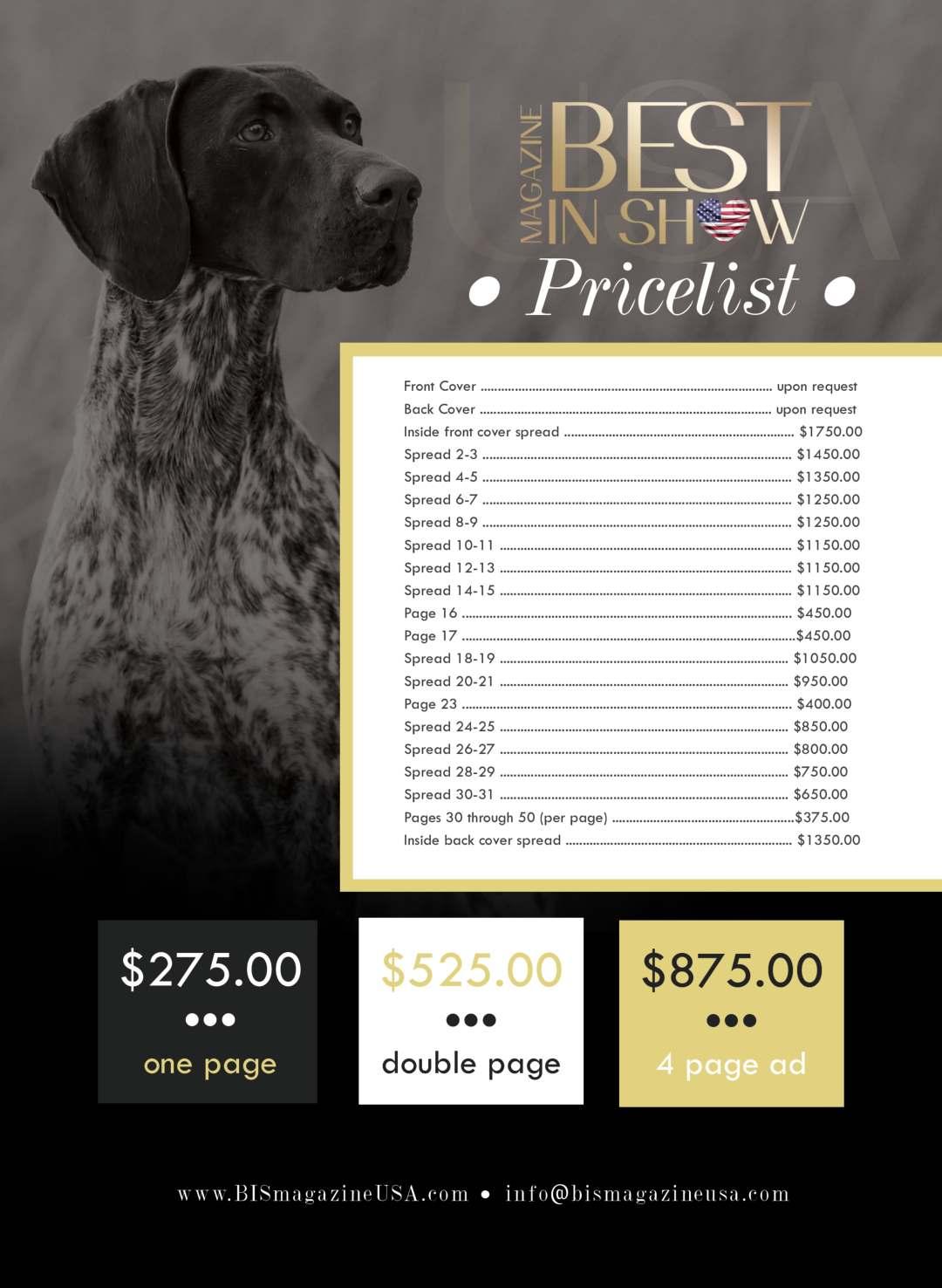
NOAHMiliam
Please tell our readers how you got involved in the world of dogs and dog showing.
I used to watch dog shows on TV when I was a young kid from about four years old. I watched Uno the Beagle win Westminster from the group. I picked him out as best in show My grandmother told me there was no way he would win and betme$50.Iwonthatbet.Laterafriendtoldmeyoucouldlearn howtoshowdogsinFlorida4HandIimmediatelyjoined4-H.
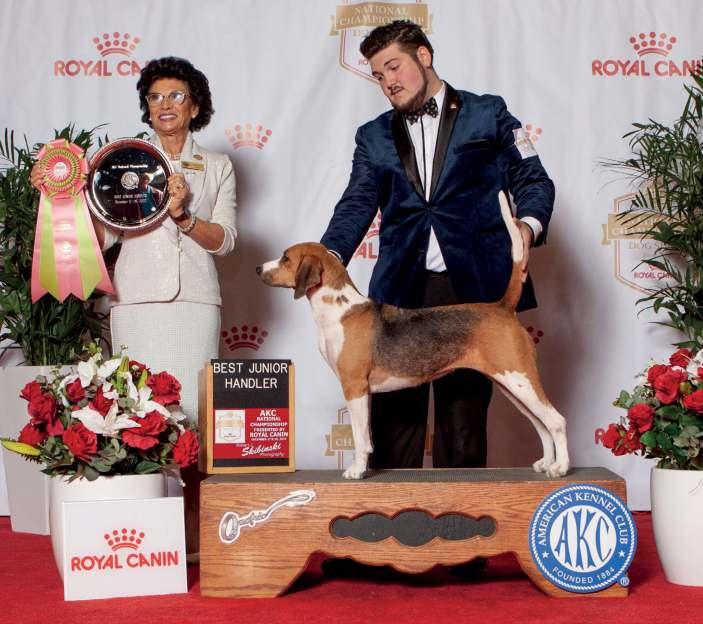 INTERVIEW WITH JUNIOR HANDLER
INTERVIEW WITH JUNIOR HANDLER
Who were your mentors from the beginning of your dog journey, and do you currently have the same or any additional mentors?
From the beginning a lot of professional handlers from the south helped me including Aaron Wilkerson. Arvind DeBraganca gave me and all my siblings classes. Kim Cardona taught my 4-H junior showmanship class. As I have developed as a handler, I rely on breeders much more to help me evaluate and accentuate each dog I show. Deb Shindle and Christina Mazepink mentored me in Cardigan Welsh Corgis, Camille Gagnon mentored me in Chows, Manuel Quintero in Bull Mastiffs and of course Mike and Phyllis Gowen in Harriers. There have been so many people that have helped me I would need a book to listeveryone.
What breeds have you been involved in handling?
IstartedwithGreatPyrenees,thenCardiganWelshCorgis, Chow Chows, Bull Mastiffs, Ibizan Hounds, and of course my Harrier. I have shown a lot of other breeds but those werethemainonesIhadshowninjuniors.
Do you currently breed and is this something you see yourself doing in the future?
Ihavenotyetbutplantothisupcomingyear.
What in your words is the purpose of dog shows?

To evaluate pure bred dogs against their standard for breedingpurposes.
Do you find it difficult to balance, personal, school and the dog show life? How do you make time to fit everything in?
I am homeschooled and all my siblings and most of my close friends show dogs, so I am able to balance my dog
showlifeveryeasily.
What profession would you like to have as an adult?
Iwouldliketogointoprofessionalhandling.
Do you prefer handling table dogs or larger dogs?
Largerdogs.
Is there a certain coat type that you prefer to prepare for the ring?
Double coated or short coat. Drops coats are a lot of dedication.
BEST IN SHOW MAGAZINE 187
What professional handlers or owner handlers inspire you?
Irecentlygottoknown,throughmysister,AliciaMorrison Jones and really enjoy watching her in the ring. Hernan Pacheco is fun to watch. Both enjoy what they are doing, anditshowsintheirperformances.
If you could be an assistant for any handler both past or present, who would it be and what would you hope you could learn from them?
Without a doubt, Robert, and Jane Forsyth. I have read theirbookmultipletimestheyseemedsoknowledgeable.
Whatdogforanypointintimedoyouwishyoucouldhandle and why?
Uno,theBeaglebecauseheinspiredmydream.
Do you show your own dogs in breed competition, if so what breeds?
Yes,IshowmyHarriersandCardiganWelshCorgis.
What have been some of your greatest achievements in the breed ring?

My Harrier, Ariel won Owner Handler Best in Show at the AKCNationalpre-showin2021.
If you could not show your own dogs, what handler would you ask to show them?
I would ask Jamie Clute to show my Cardigans and Diego GarciatoshowmyHarriers.
YourecentlyhadagreatvictoryattheAKCshowinOrlando, can you please share this with our readers and give a little insight into the whole experience?
I won Best Junior Handler at the AKC National Junior
BEST IN SHOW MAGAZINE 188
JUNIOR HANDLER · NOAH MILIAM
InvitationalinOrlando.Itwasadreamcometrue,stillseems surrealtome.
Whatisyourfavoriteshowoftheyeartoattend,andwhy?
I really love attending my breeds national specialties each year.

Have you been to any shows outside of the USA, if not, would youliketo?
Ihavenotbeenoutofthecountrybutaspartofmyprizefor BestJuniorIgettorepresenttheUSAatCruftsInternational JuniorShowmanshipcompetition.Iamexcitedtogotothe UK.
Is there anything you wish judges understood more when it comestojudgingjuniorshowmanship?

It would be nice if judges were more familiar with all the breeds presented especially breeds considered unusual for juniorhandlers.
Junior handlers are the future of the sport; do you feel in general that you and other juniors are treated with the respectyoudeservetoinspireyoutostayinthesport?
I feel like most people respect junior handlers and try to understand their commitment to the sport but there is alwaysroomforimprovement.
Do you have any pastimes outside the world of dogs?
Iloveanythingtodowithcarsandgocarts,listeningtoold rock and rap music, and reading comic books. I also enjoy TikTok.
Whatareyouownpersonalfuturegoalsintheworldofdogs?
To become a junior showmanship judge and become a breederofmeritinHarriersandCardiganWelshCorgis.
BEST IN SHOW MAGAZINE 189
JUNIOR HANDLER · NOAH MILIAM
















 S.L. Stutz
S.L. Stutz


















































 photo credits: Beltran Hortiguela
click
photo credits: Beltran Hortiguela
click





























































































































































 INTERVIEW WITH JUNIOR HANDLER
INTERVIEW WITH JUNIOR HANDLER







